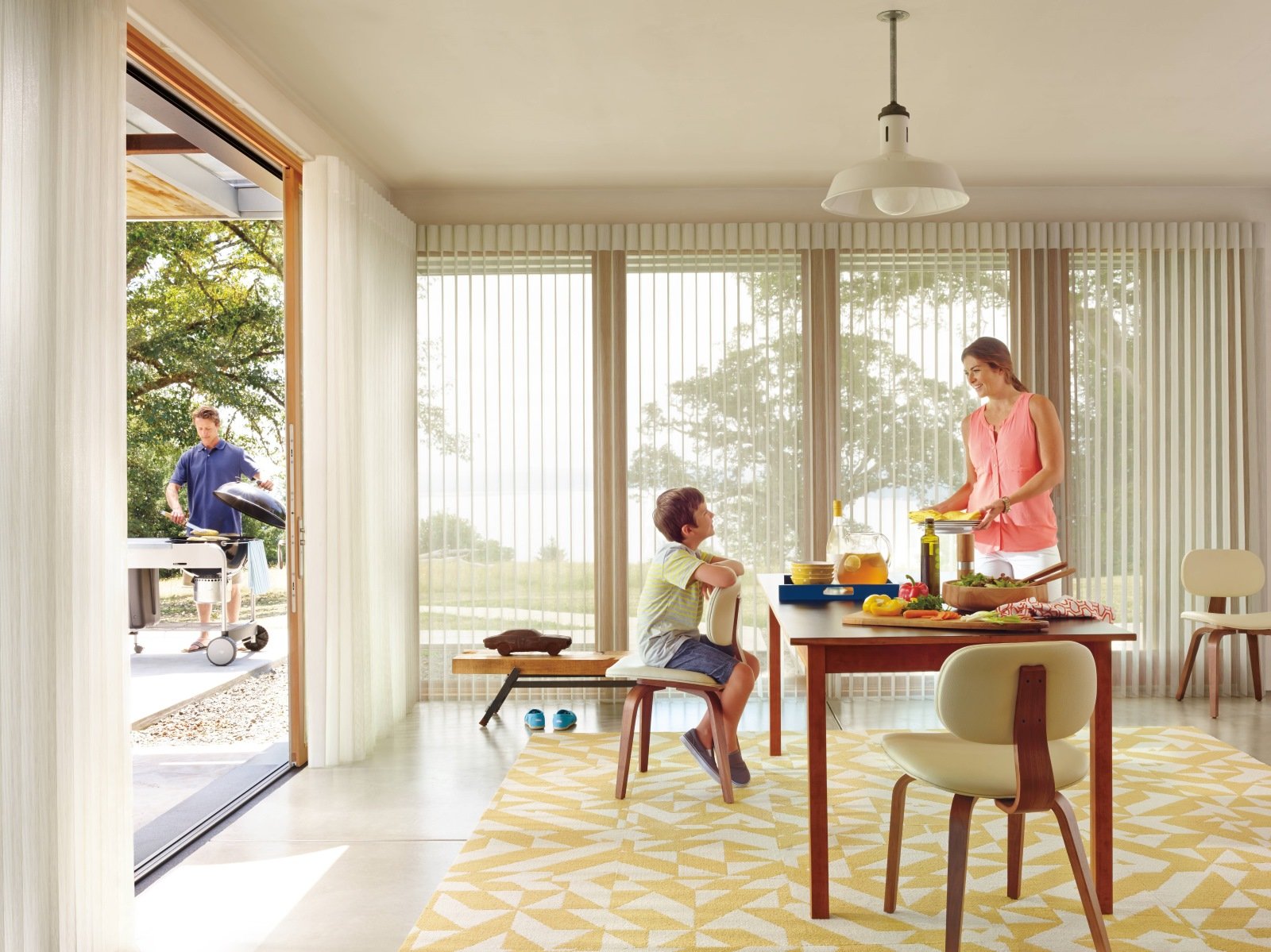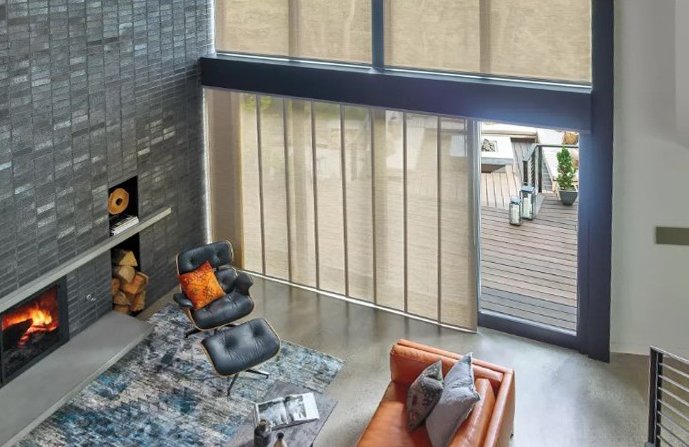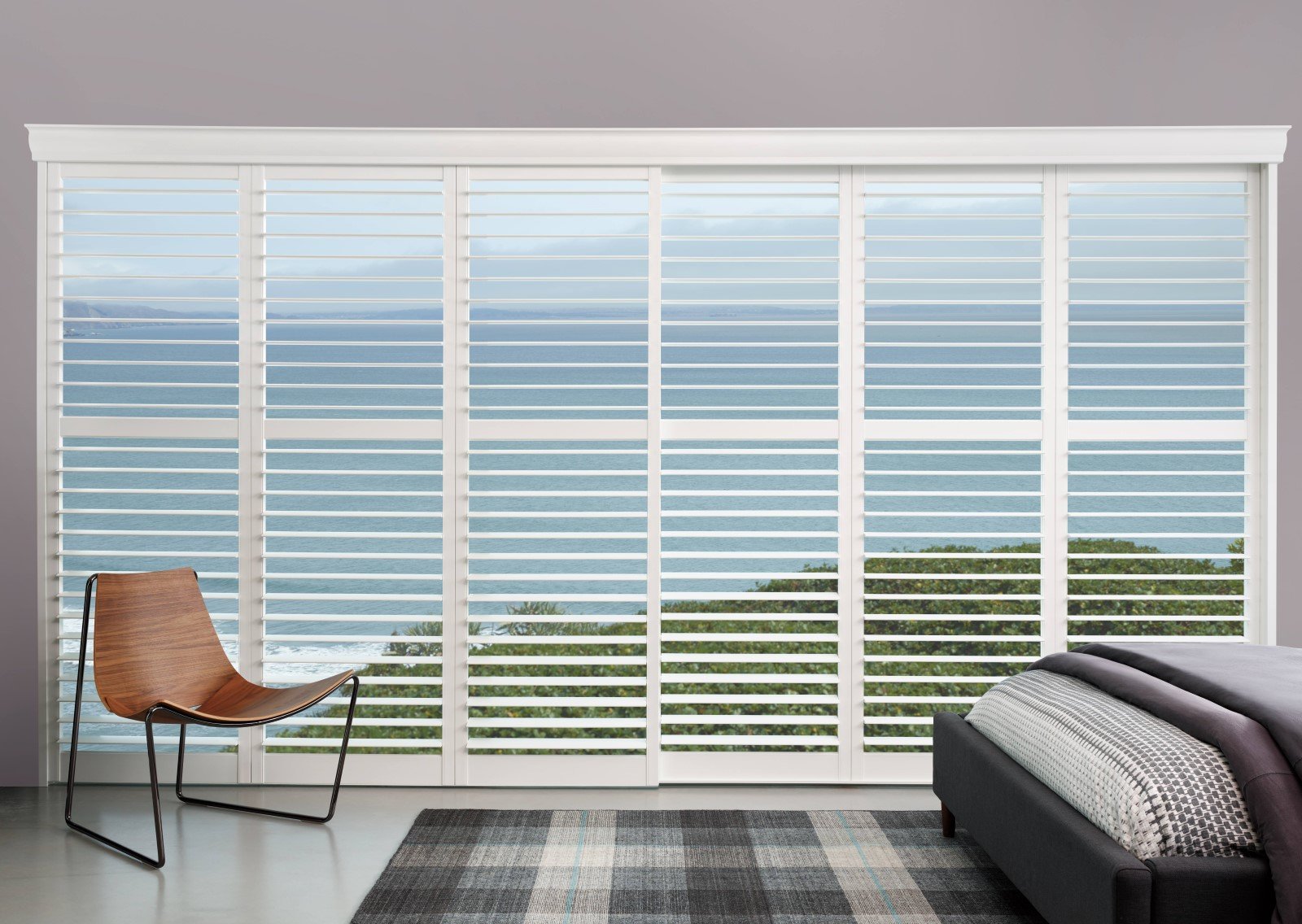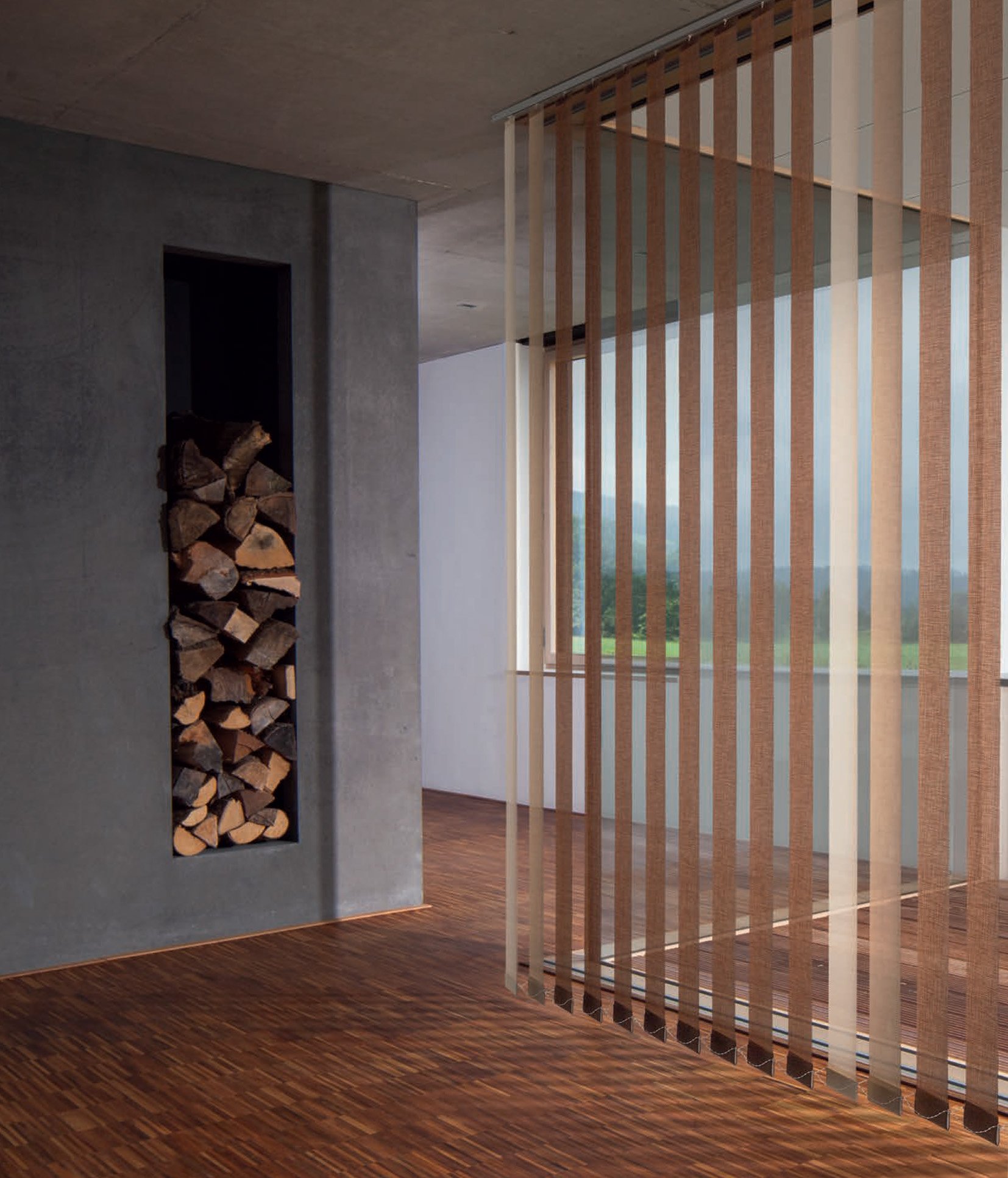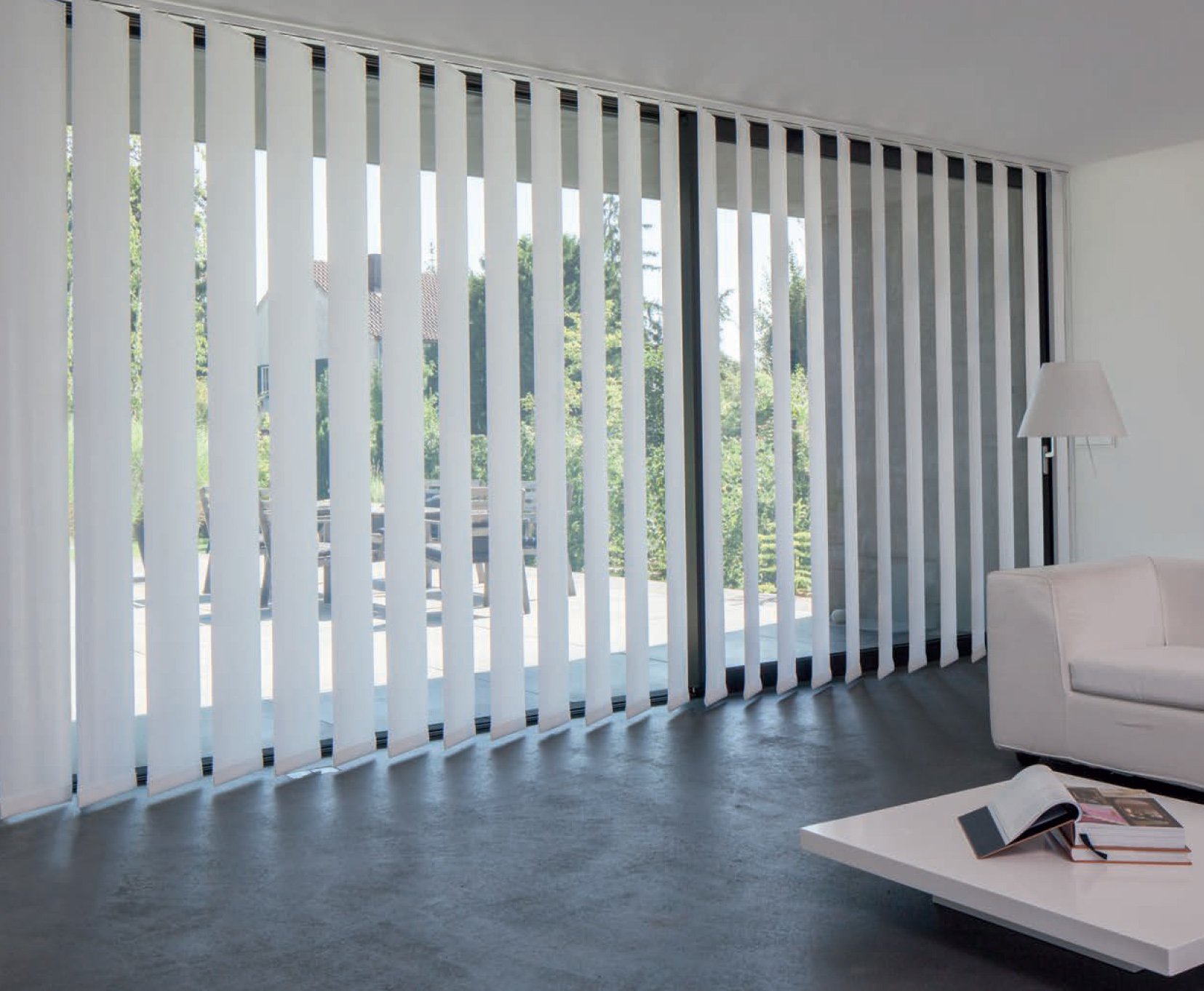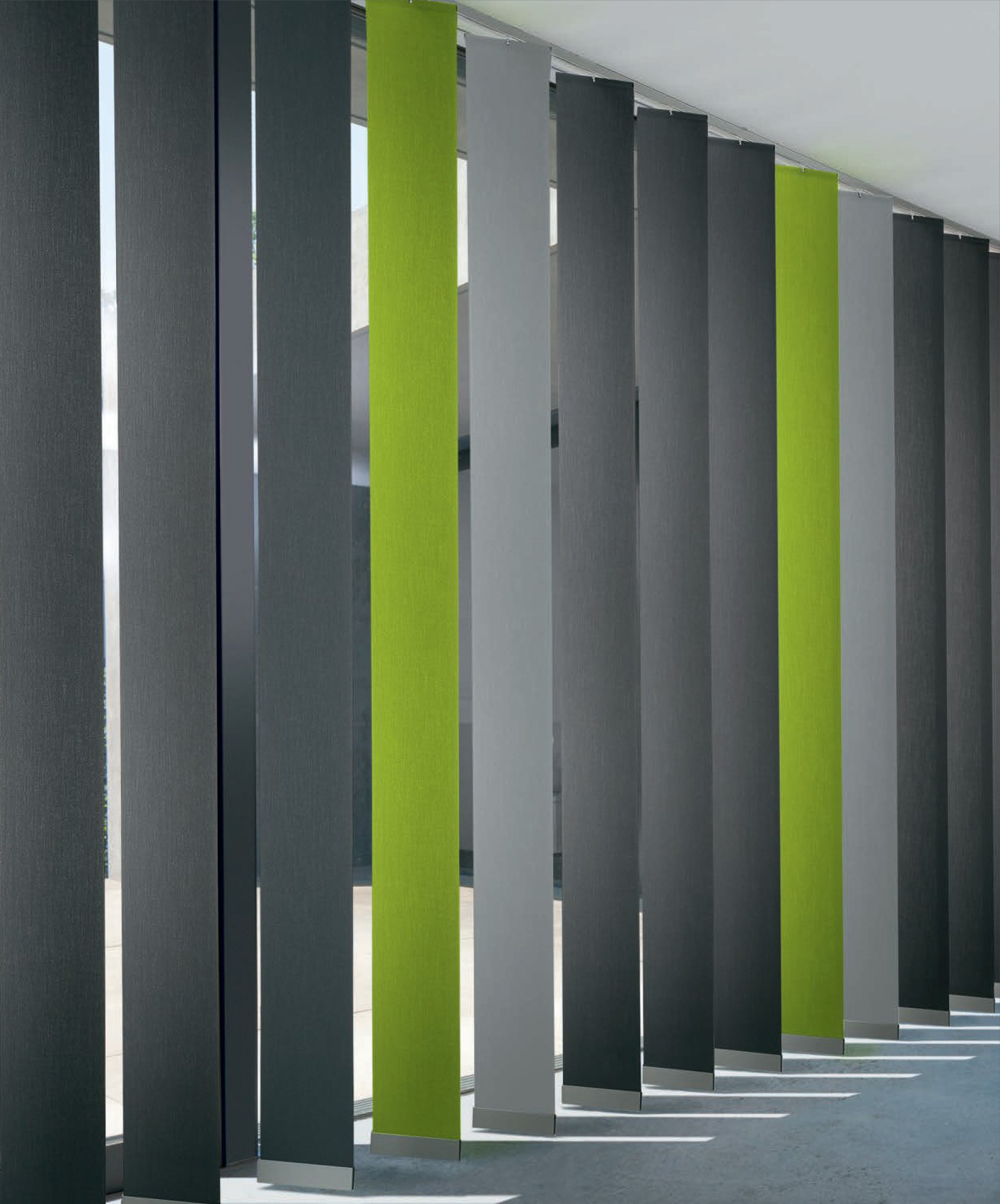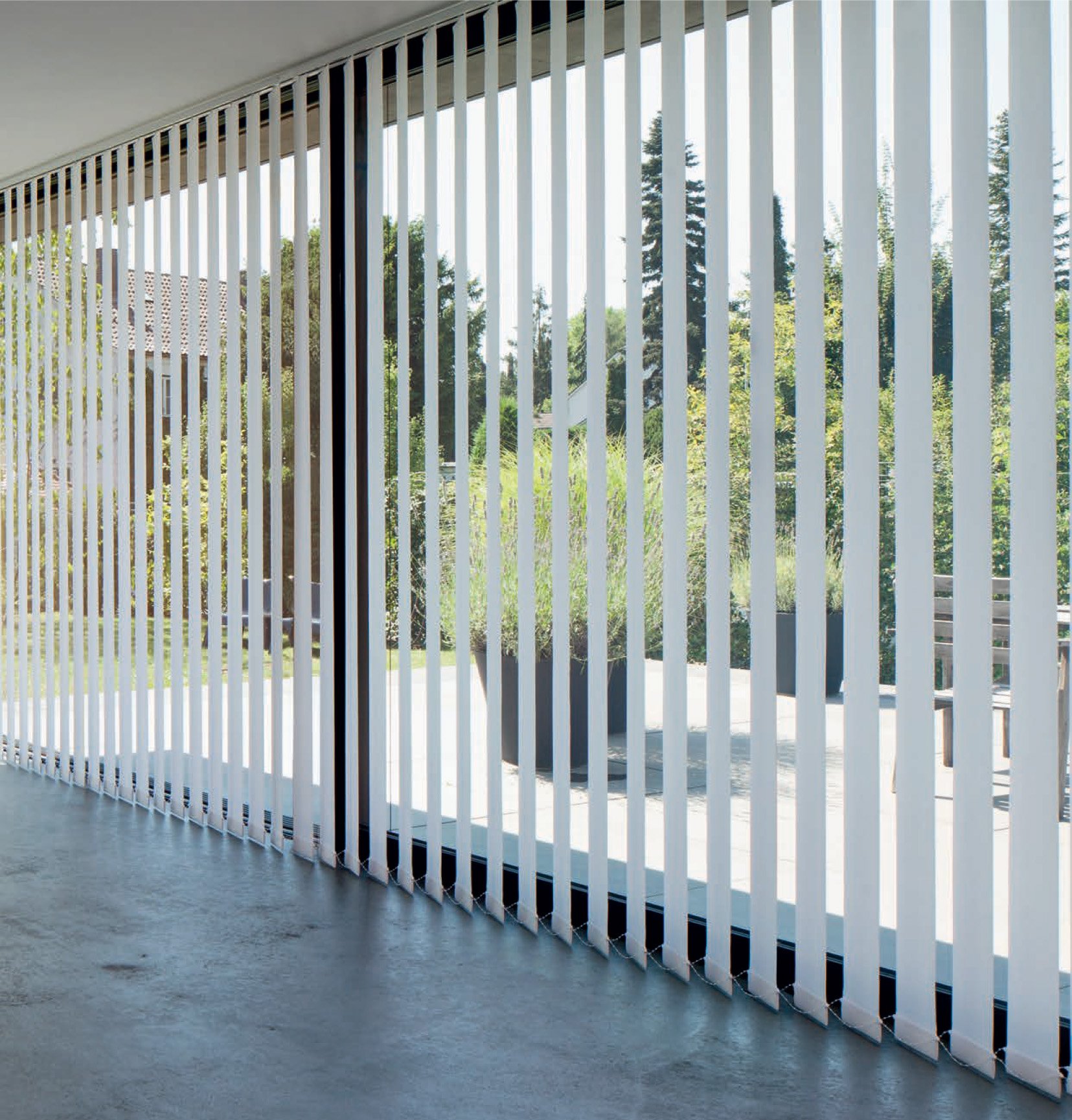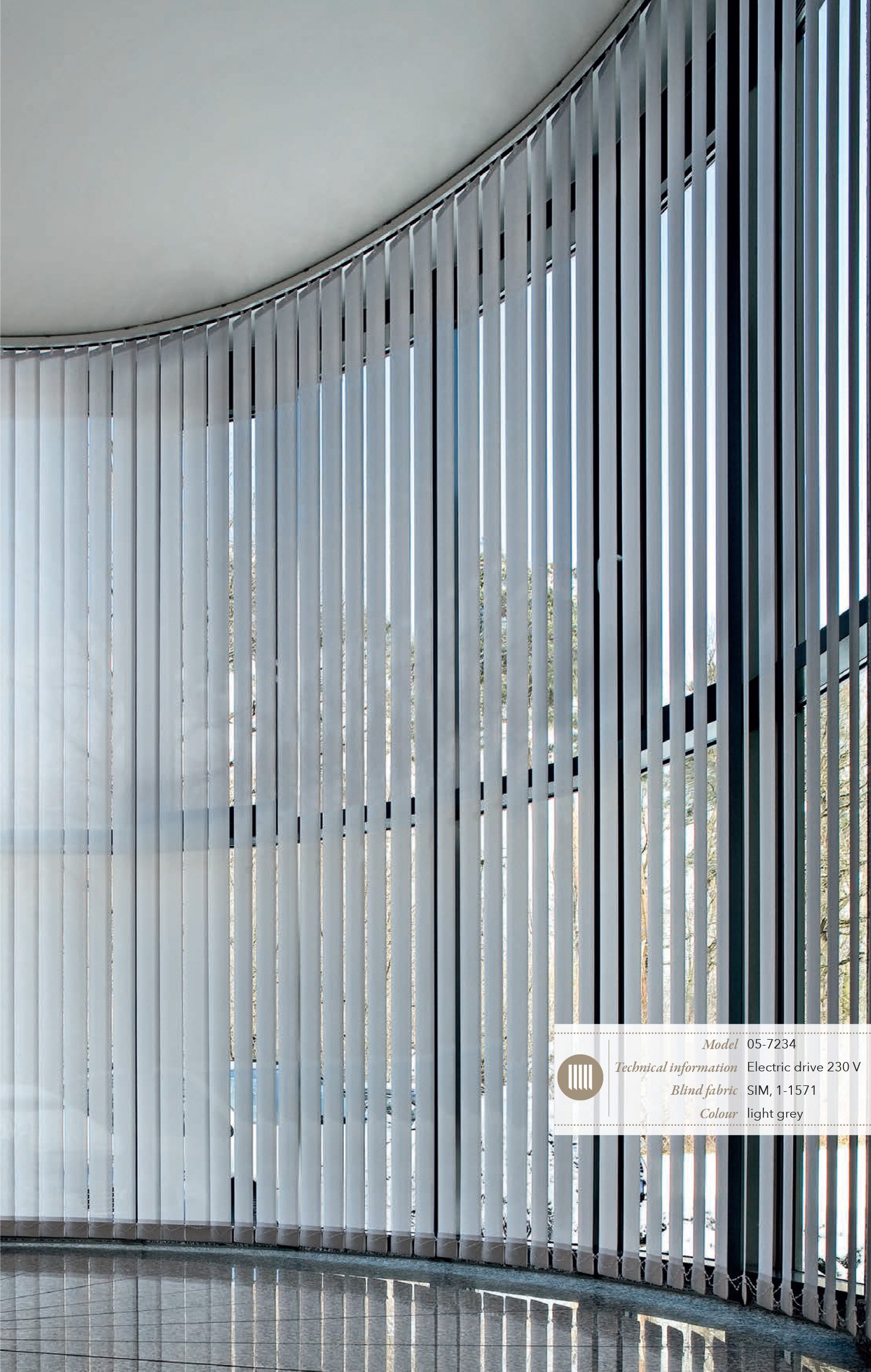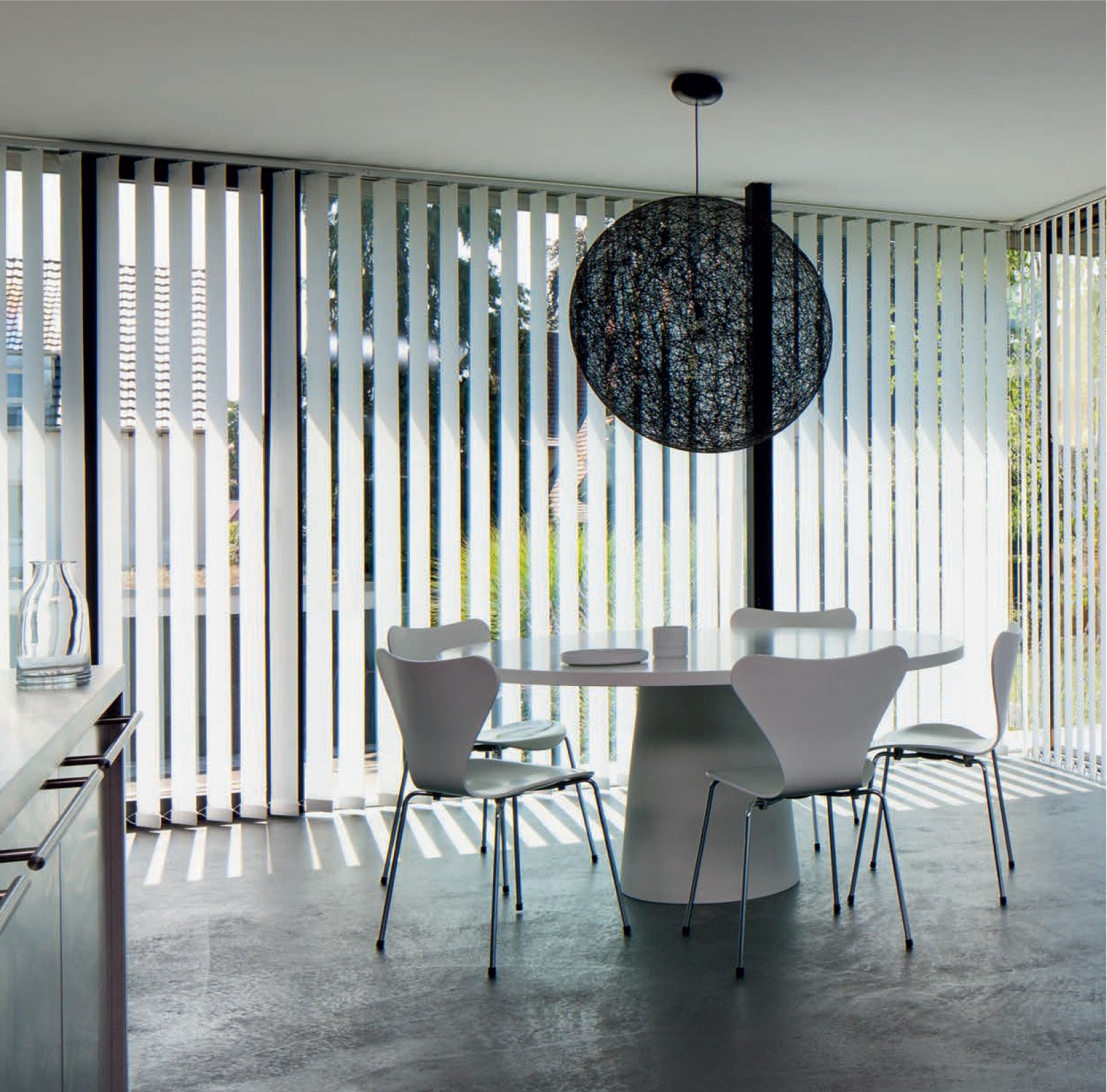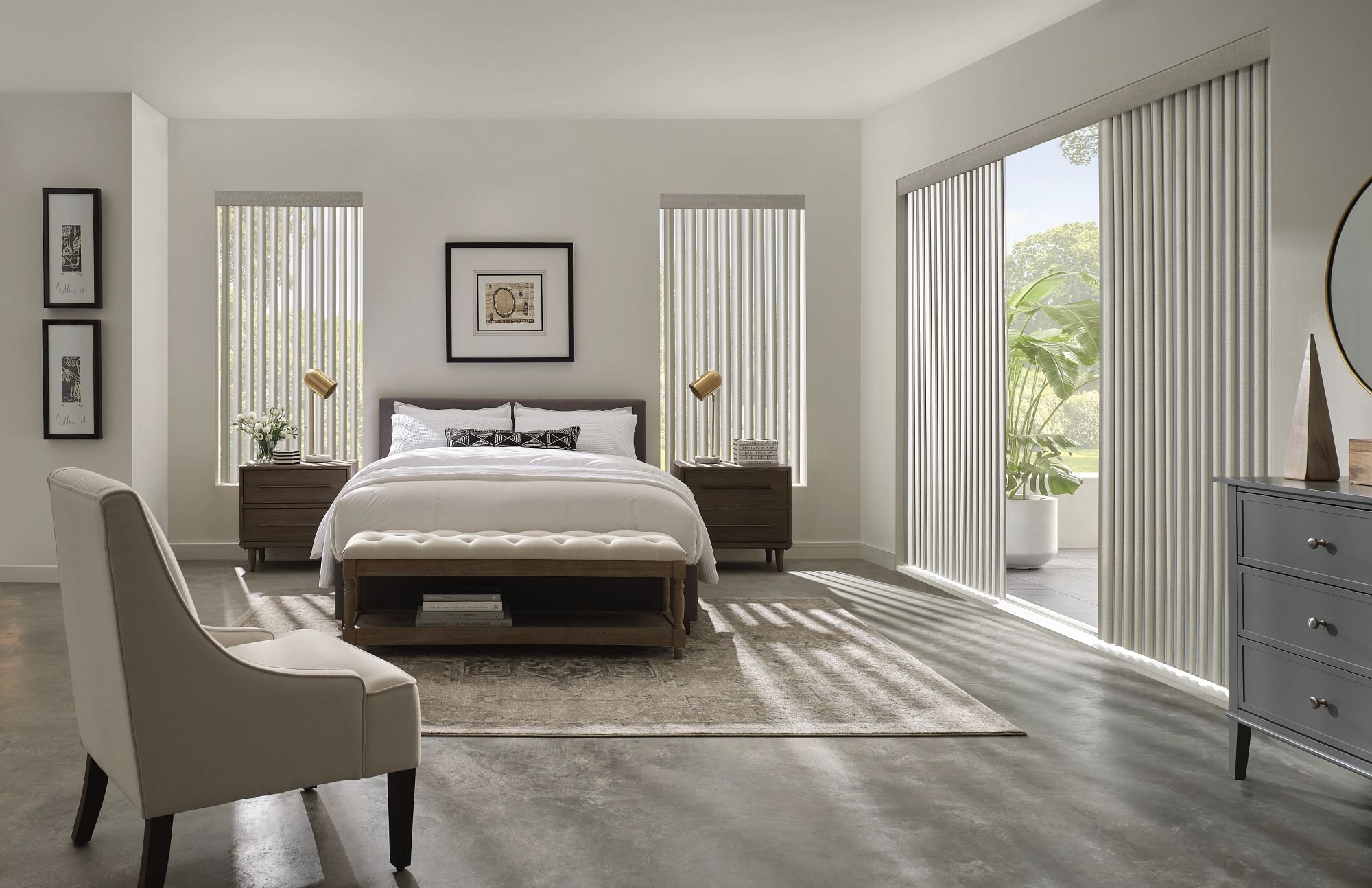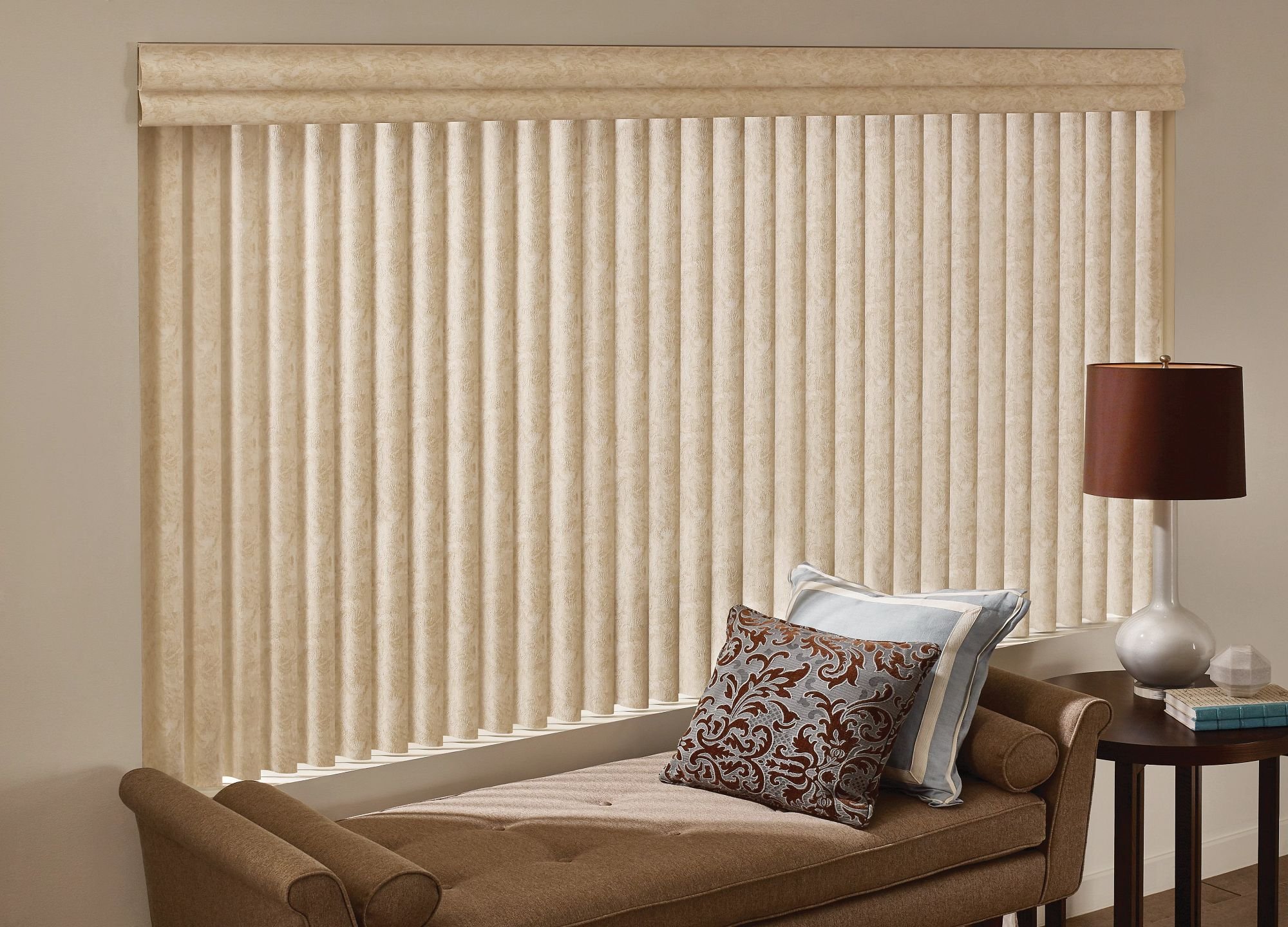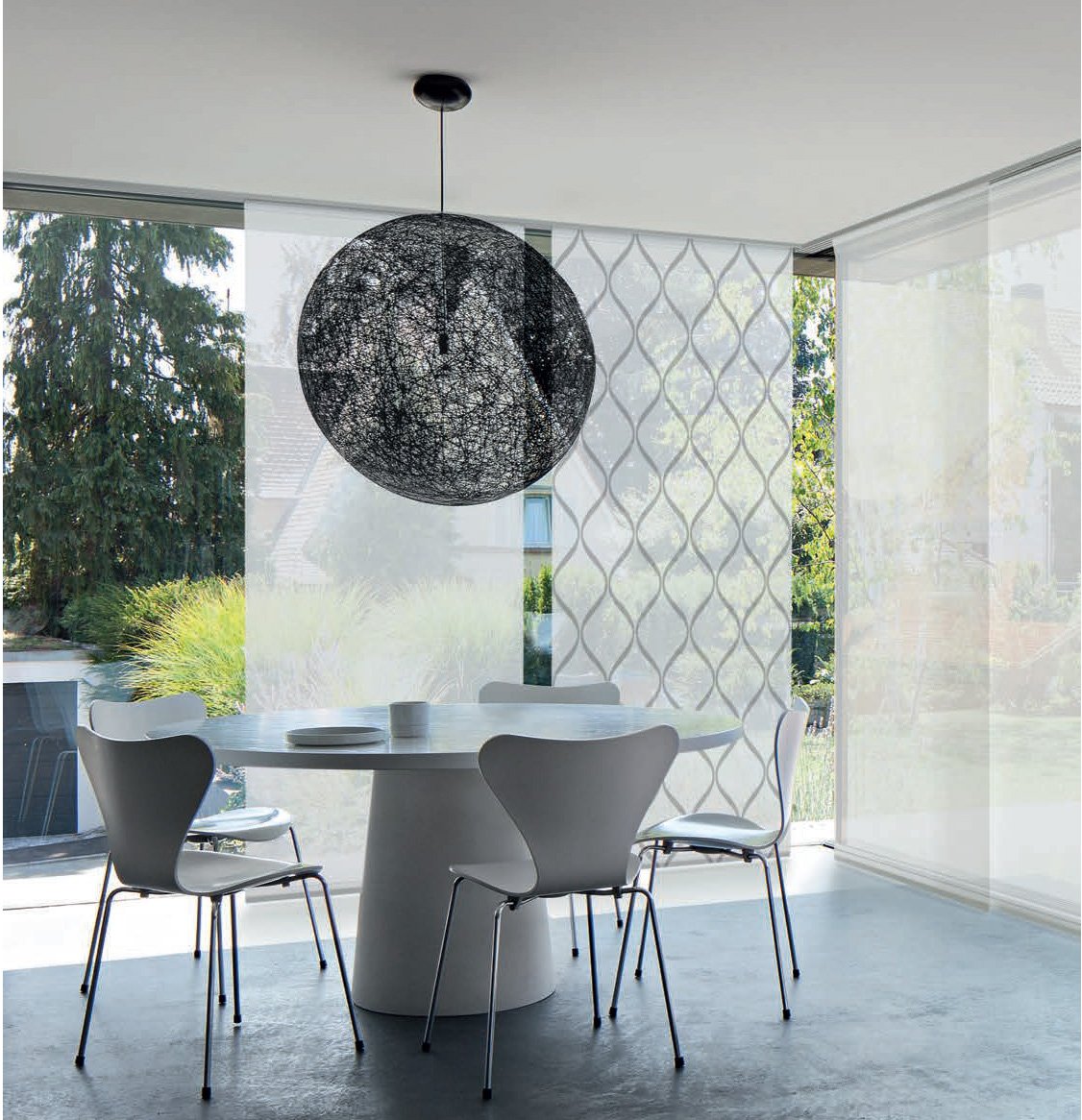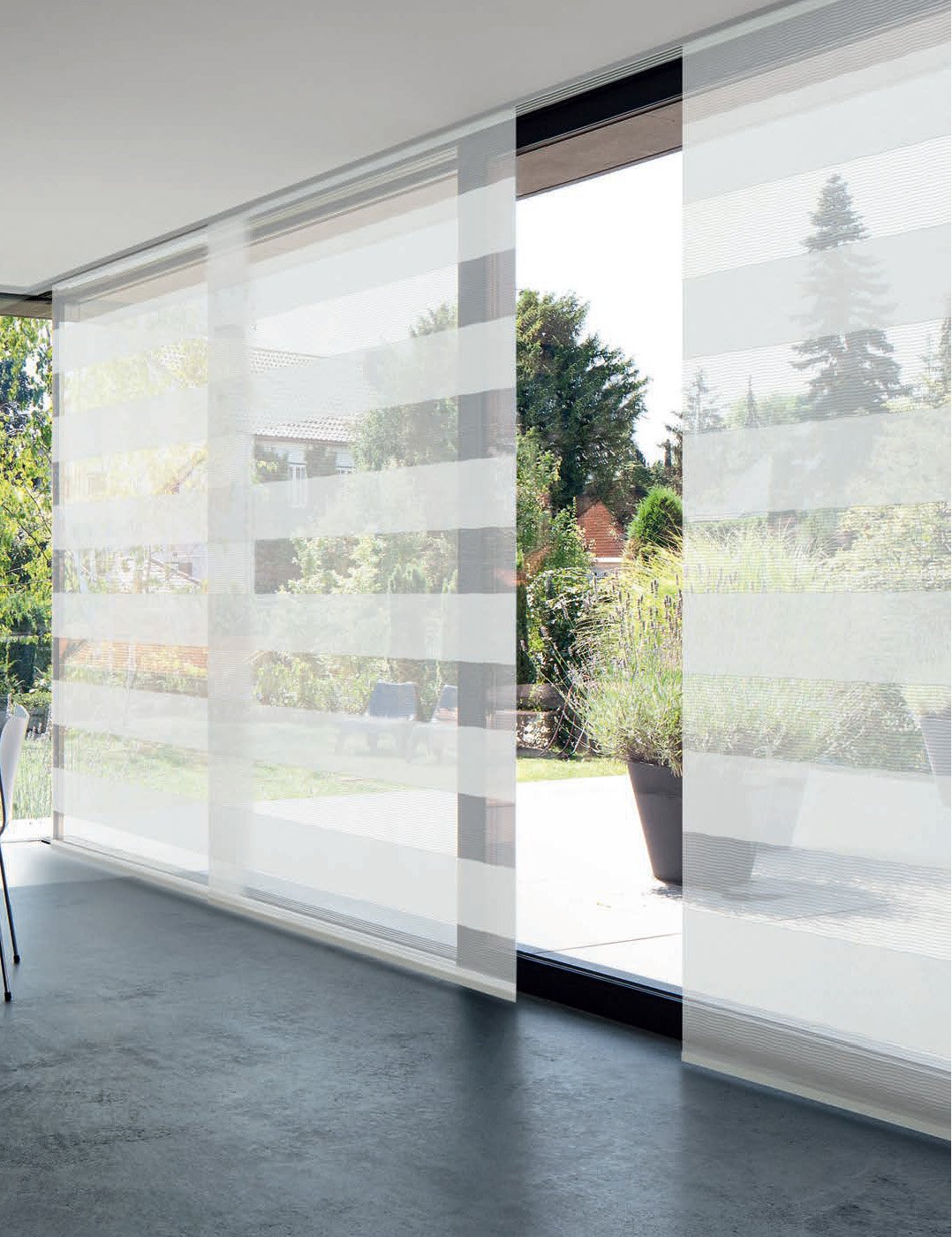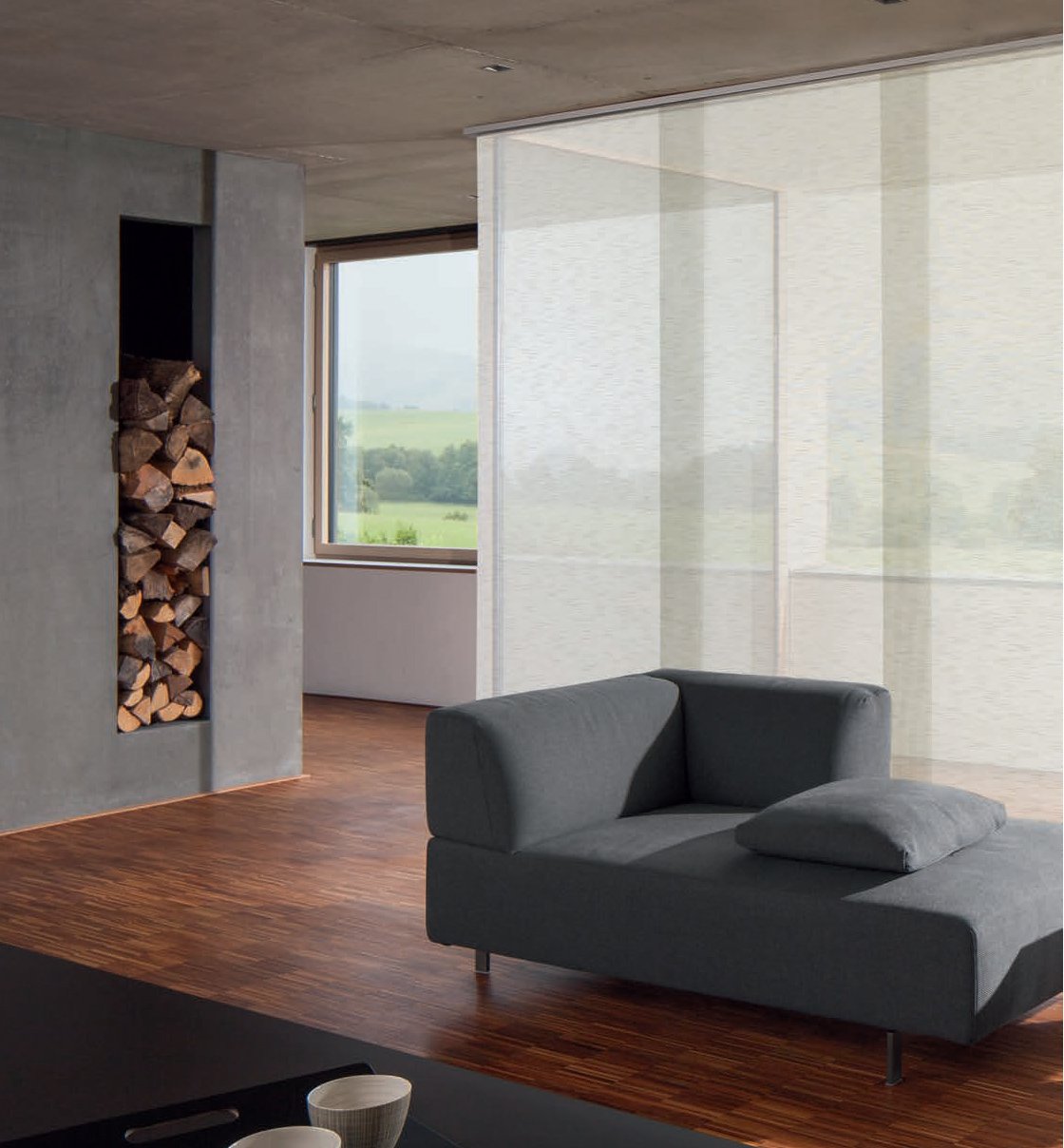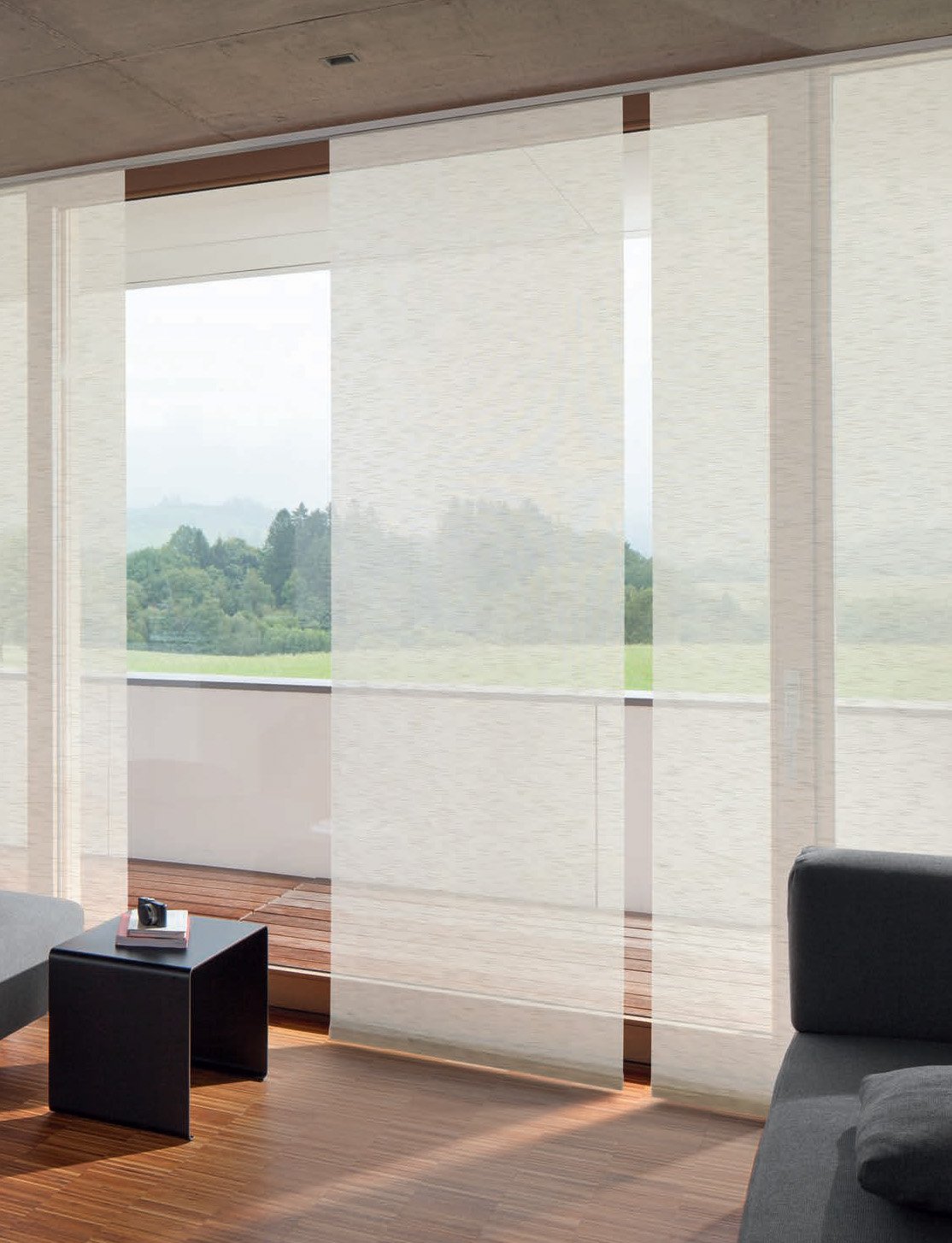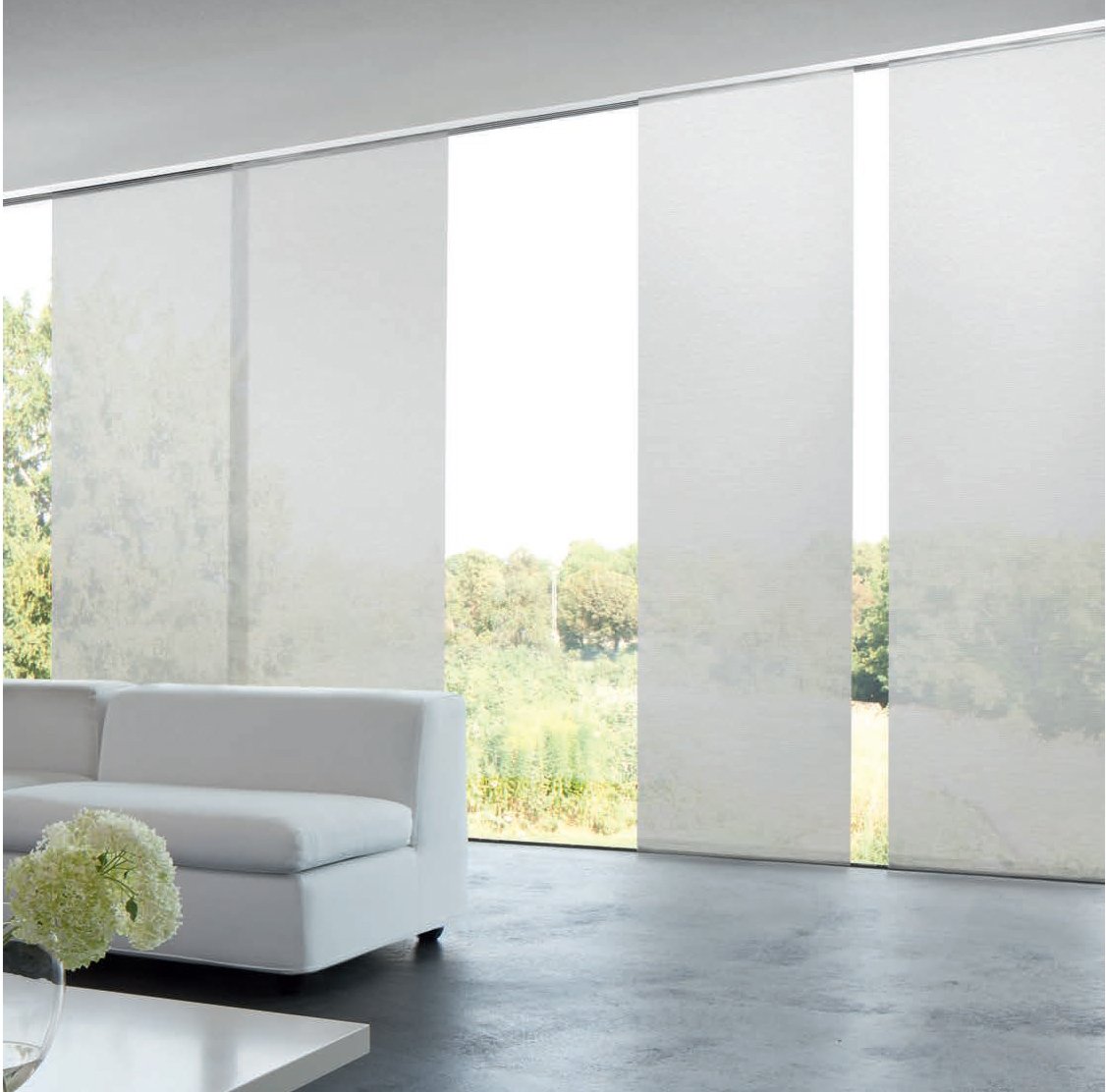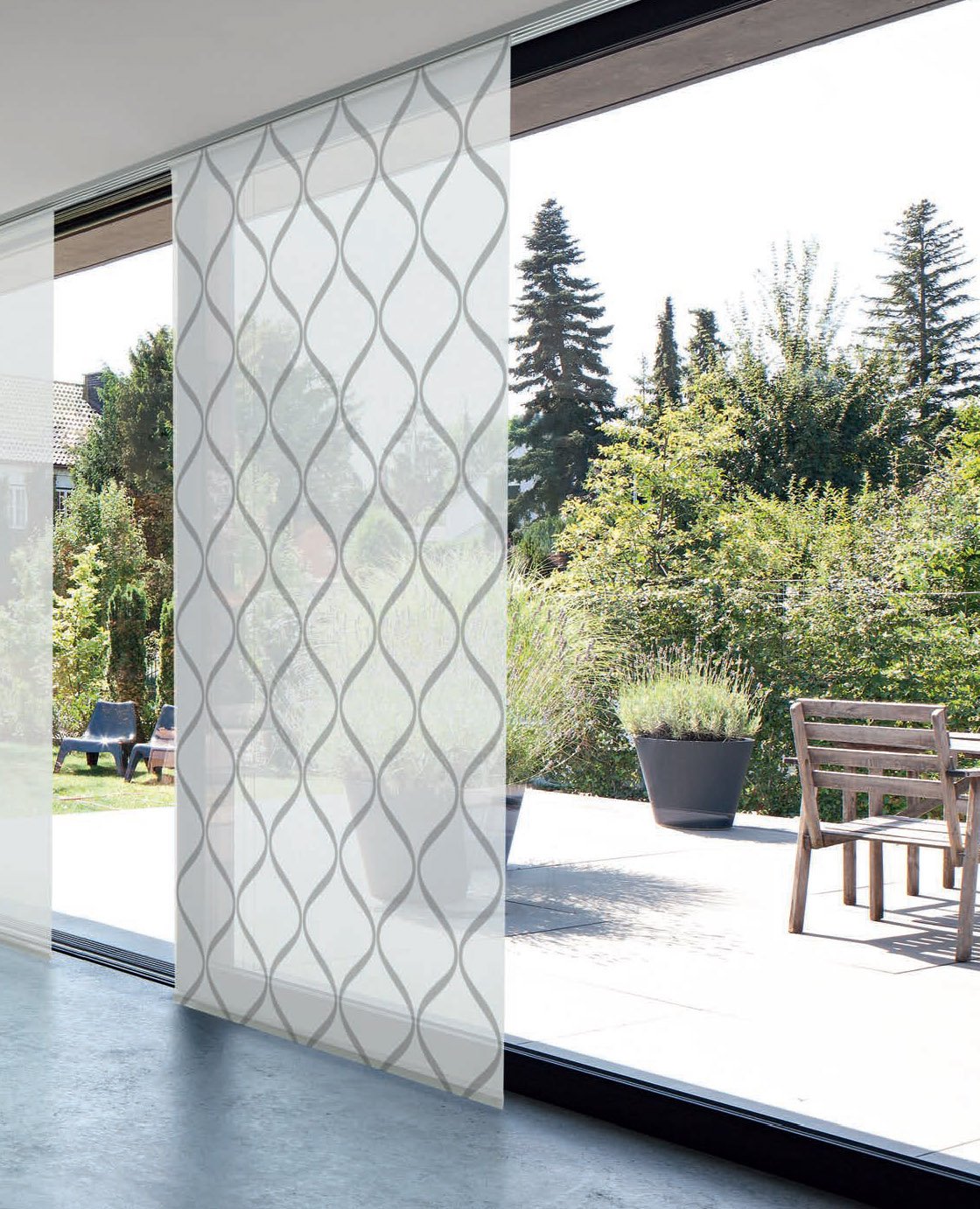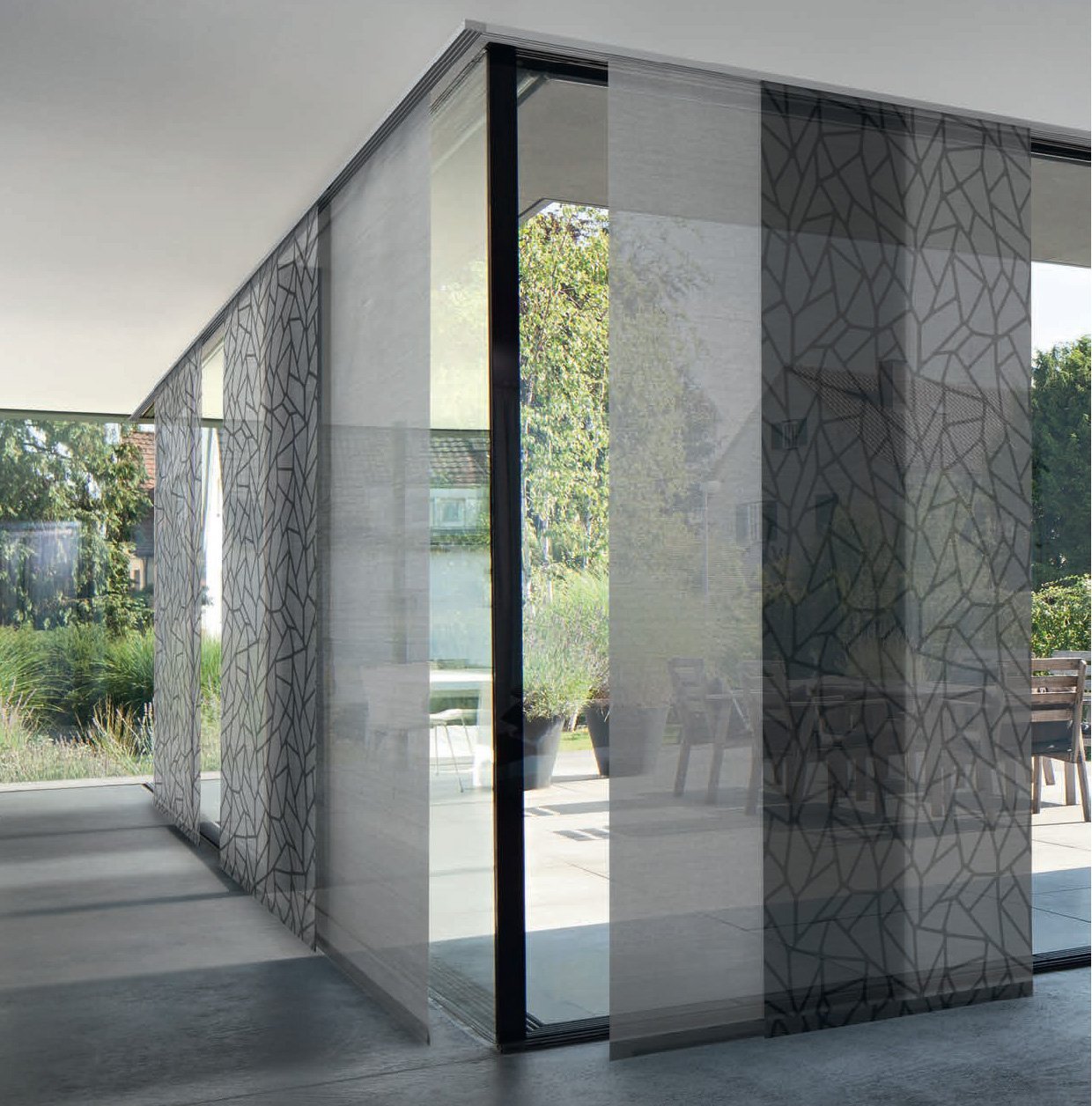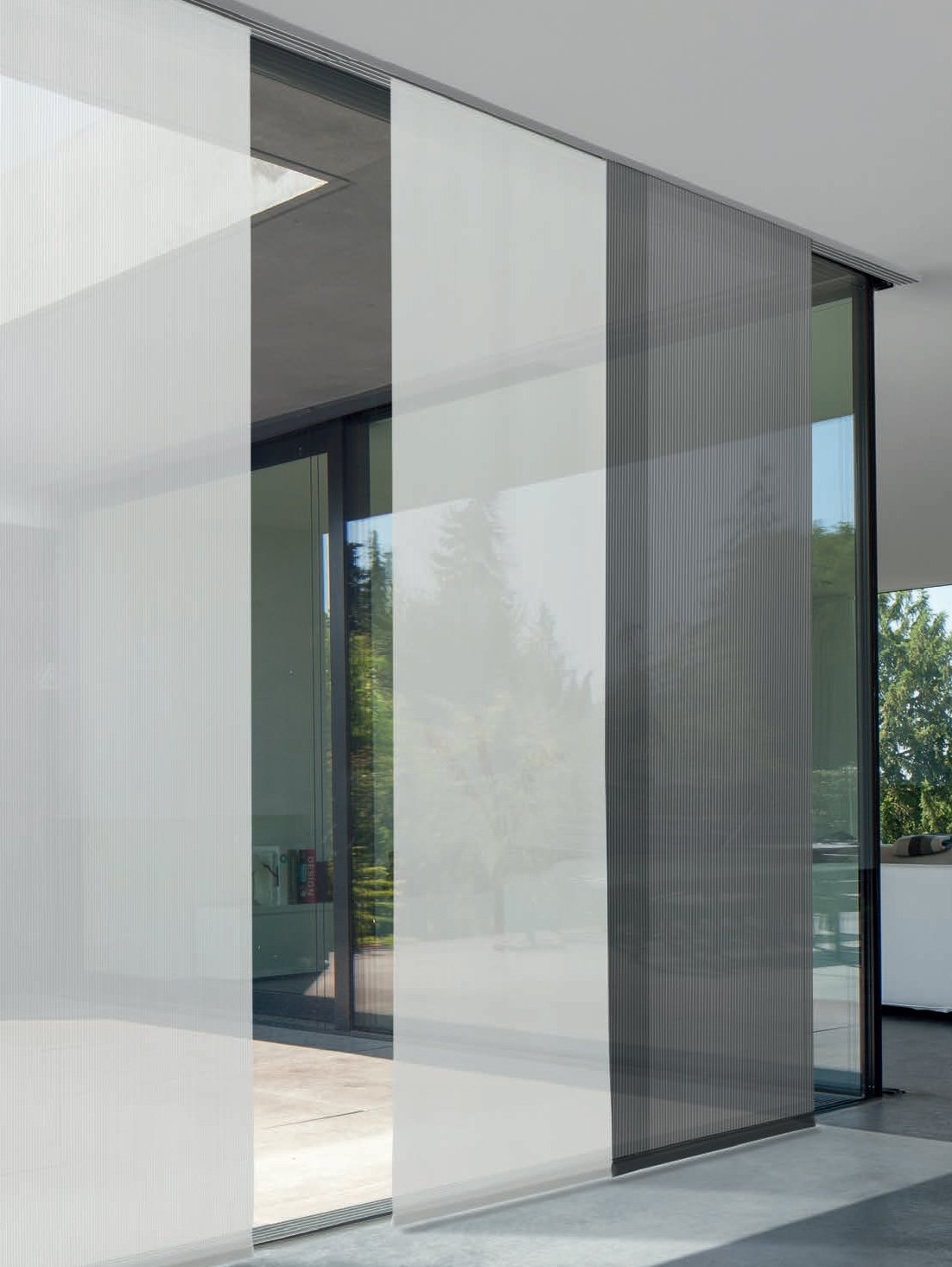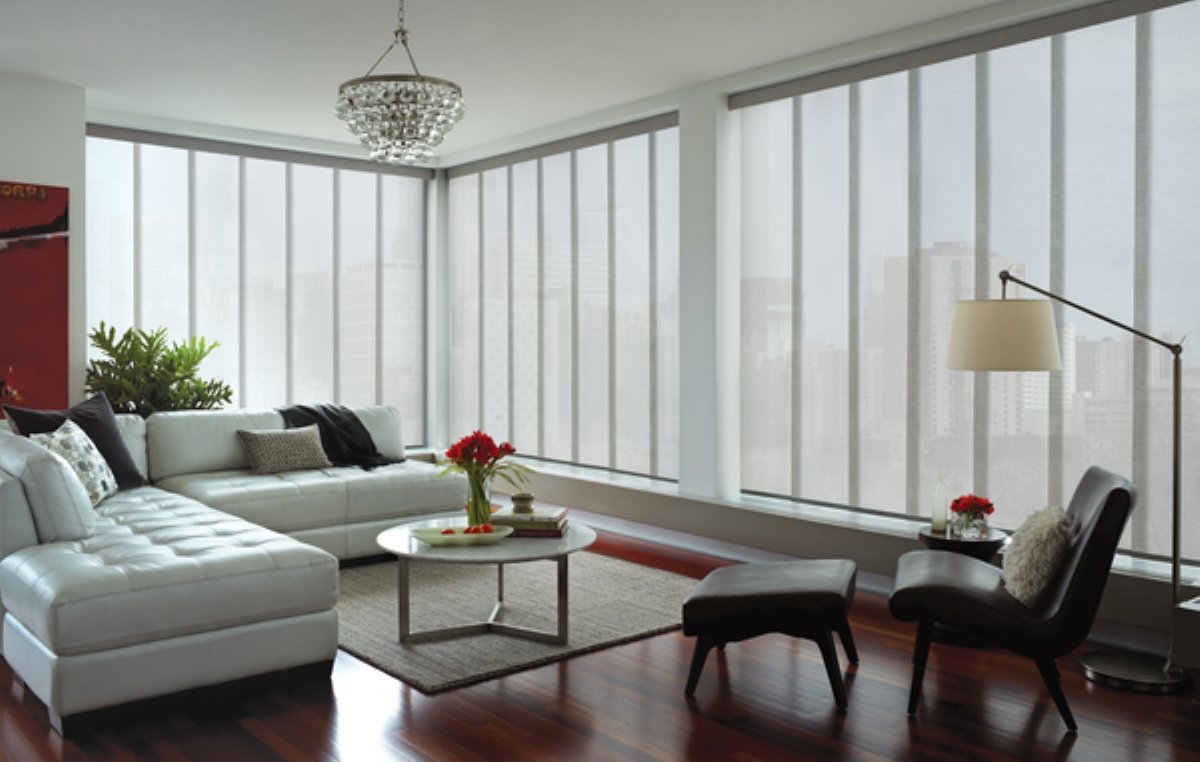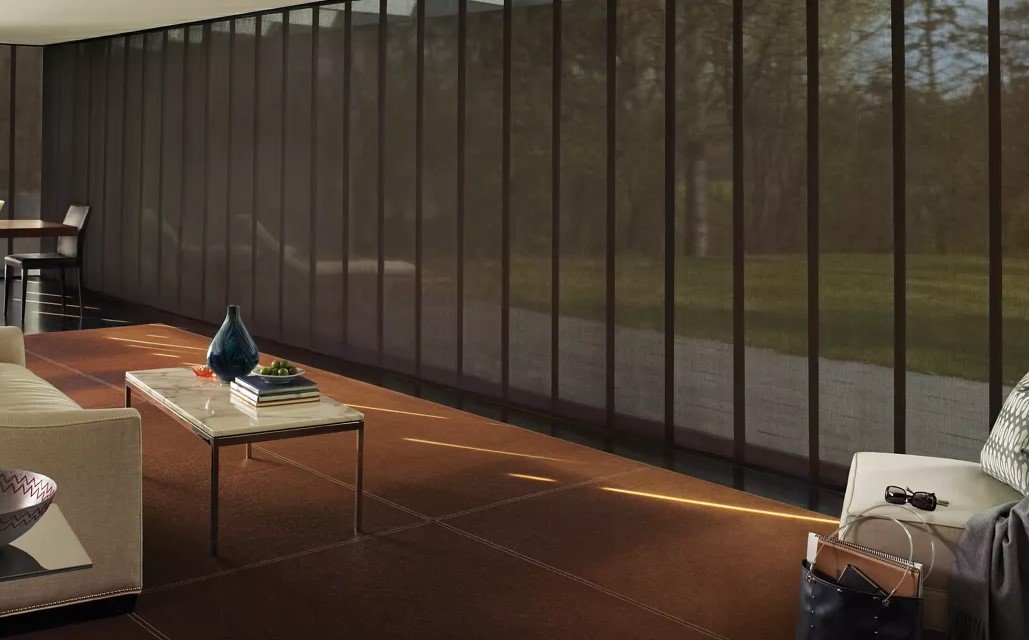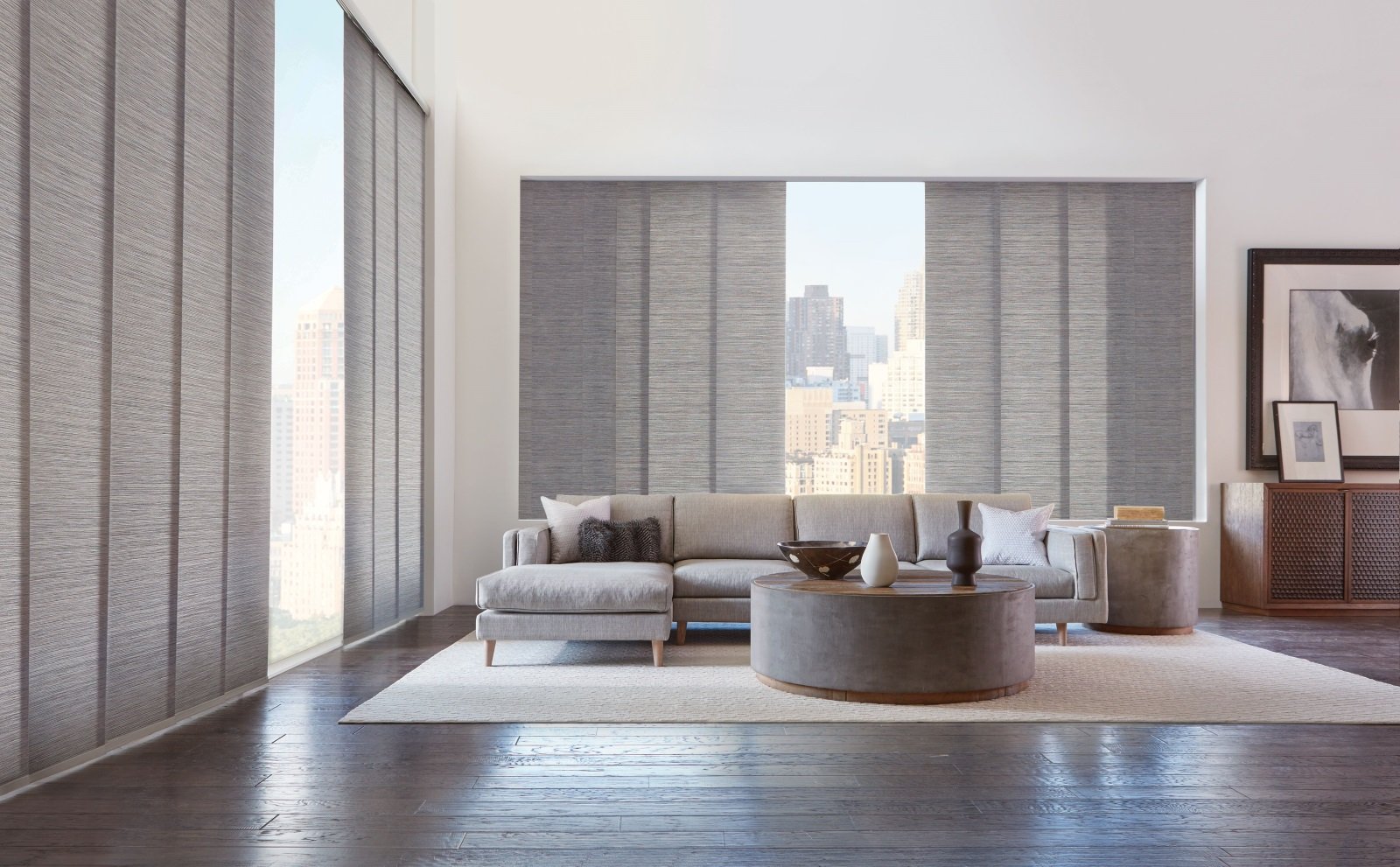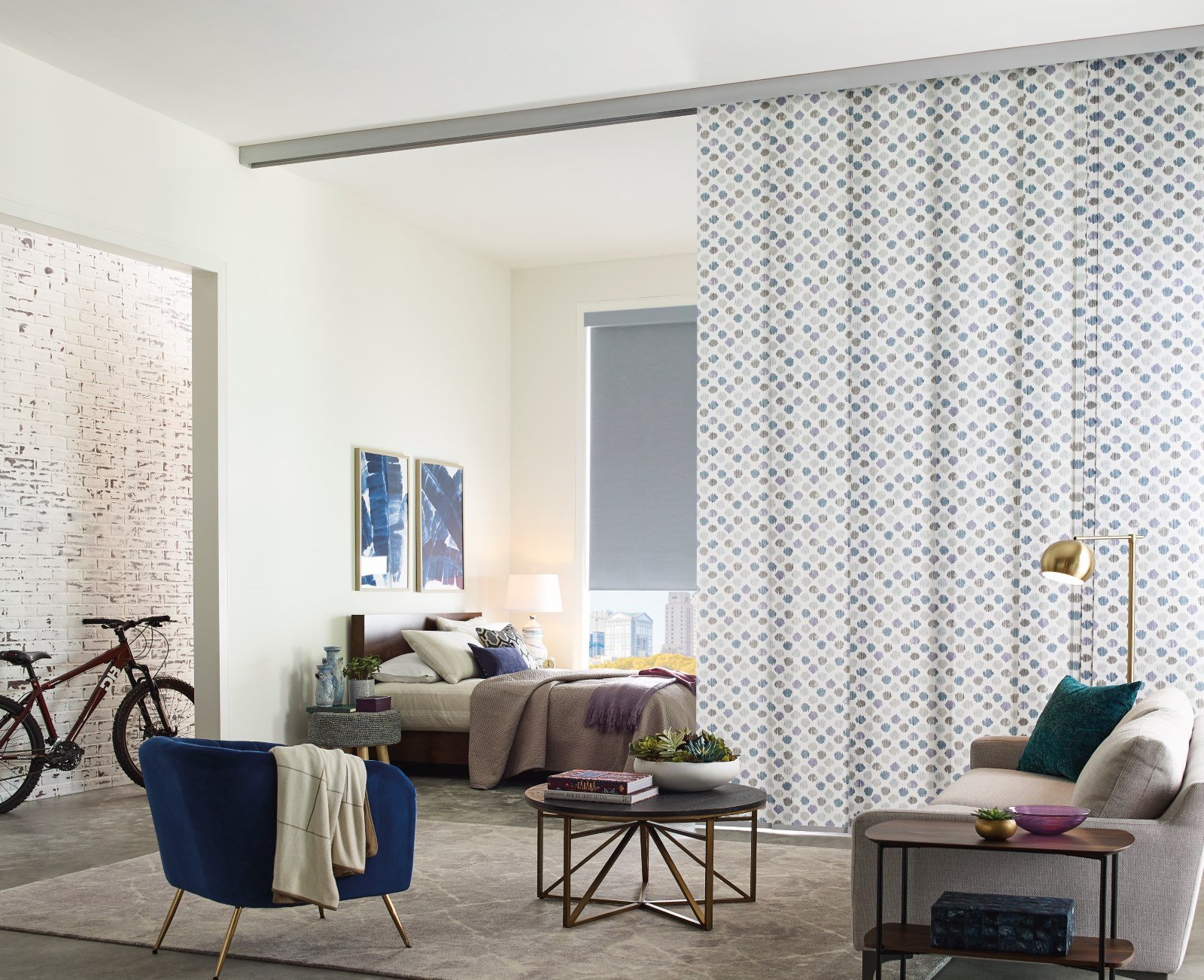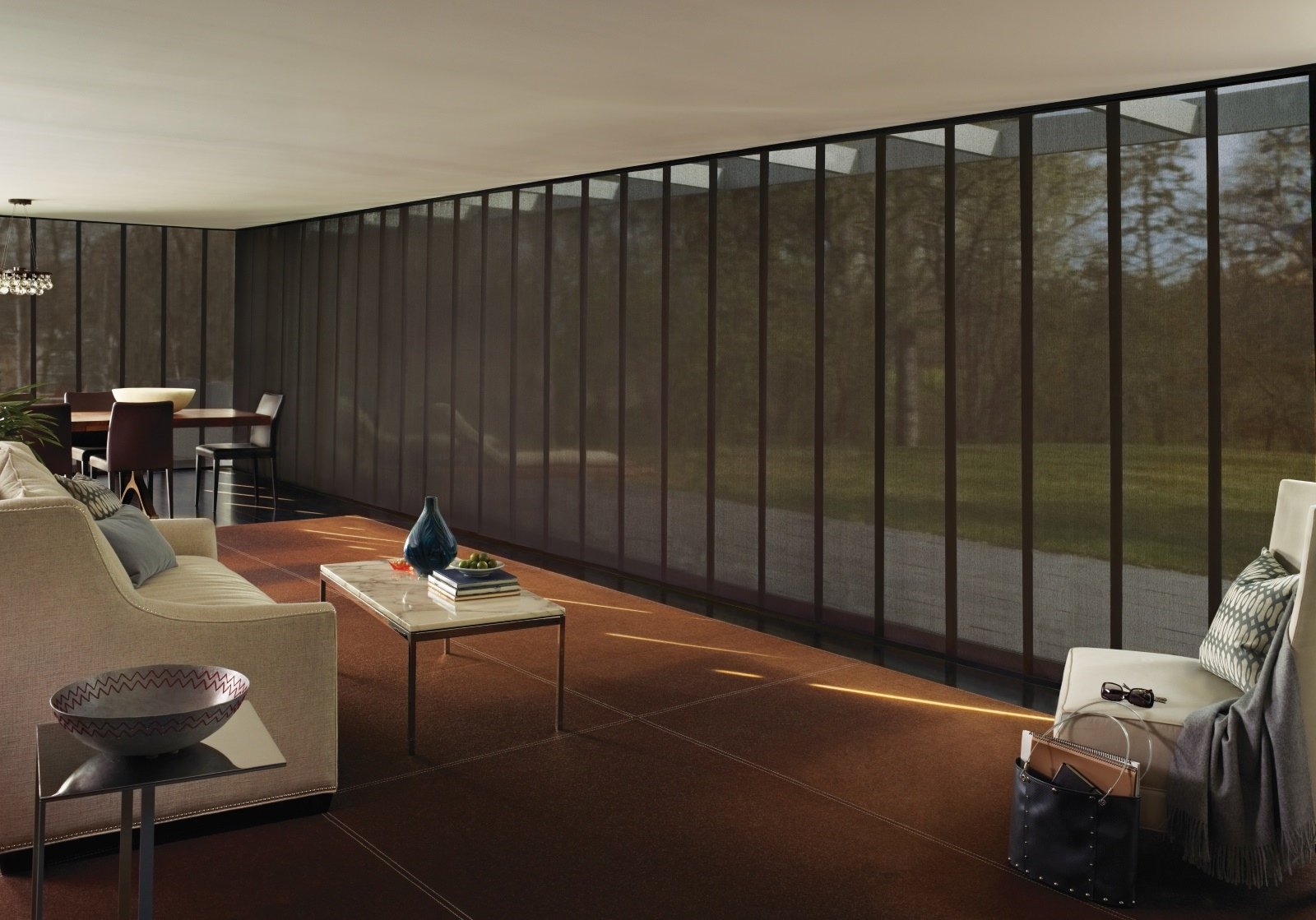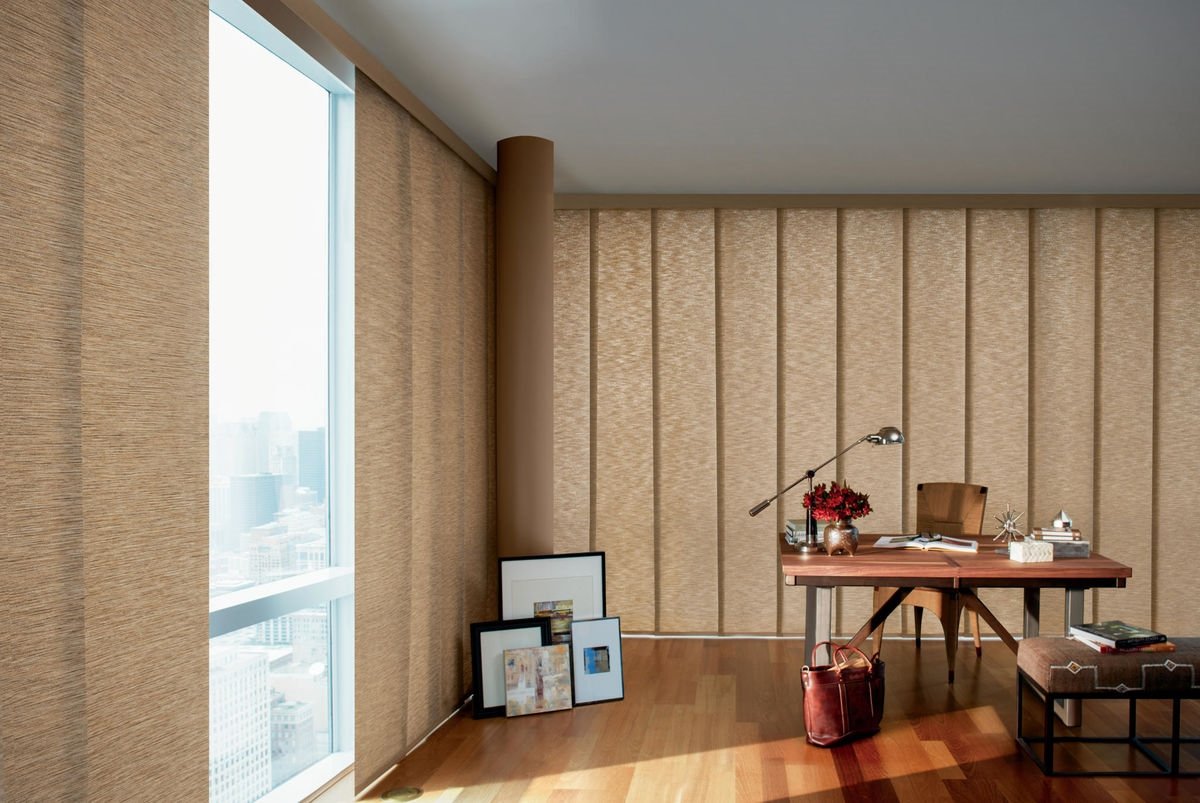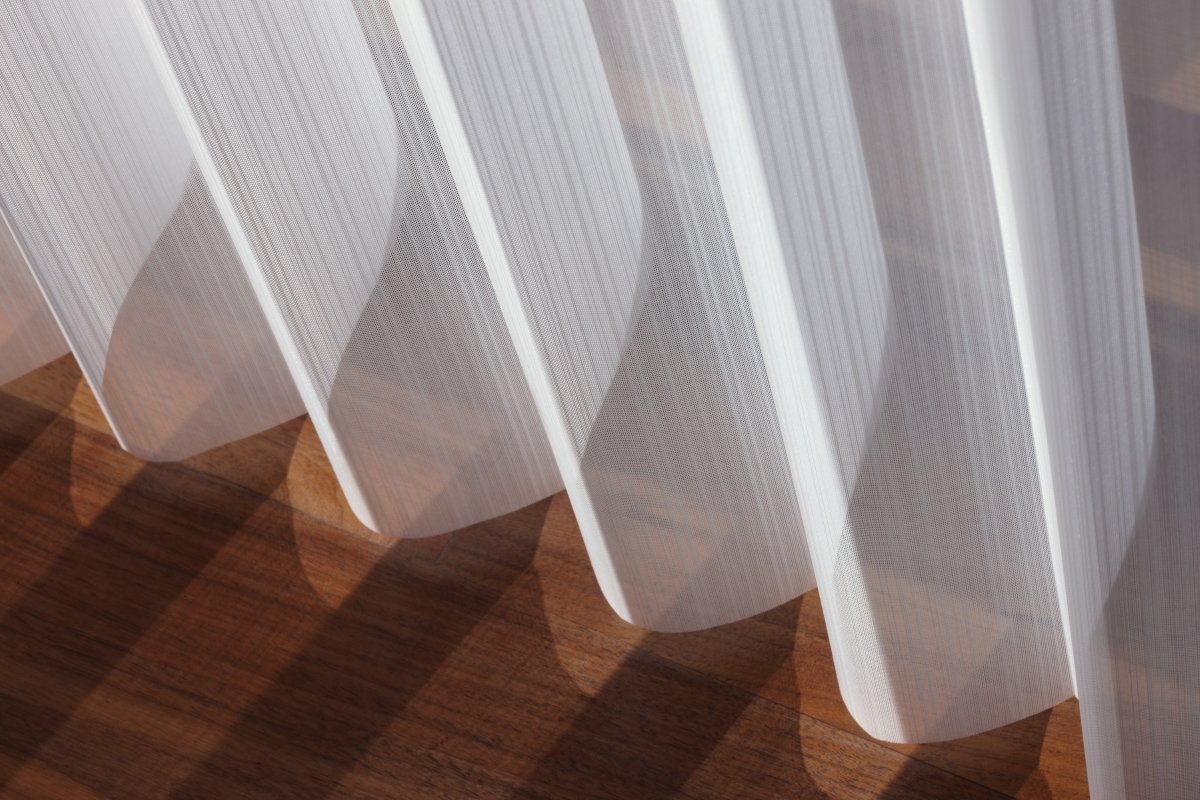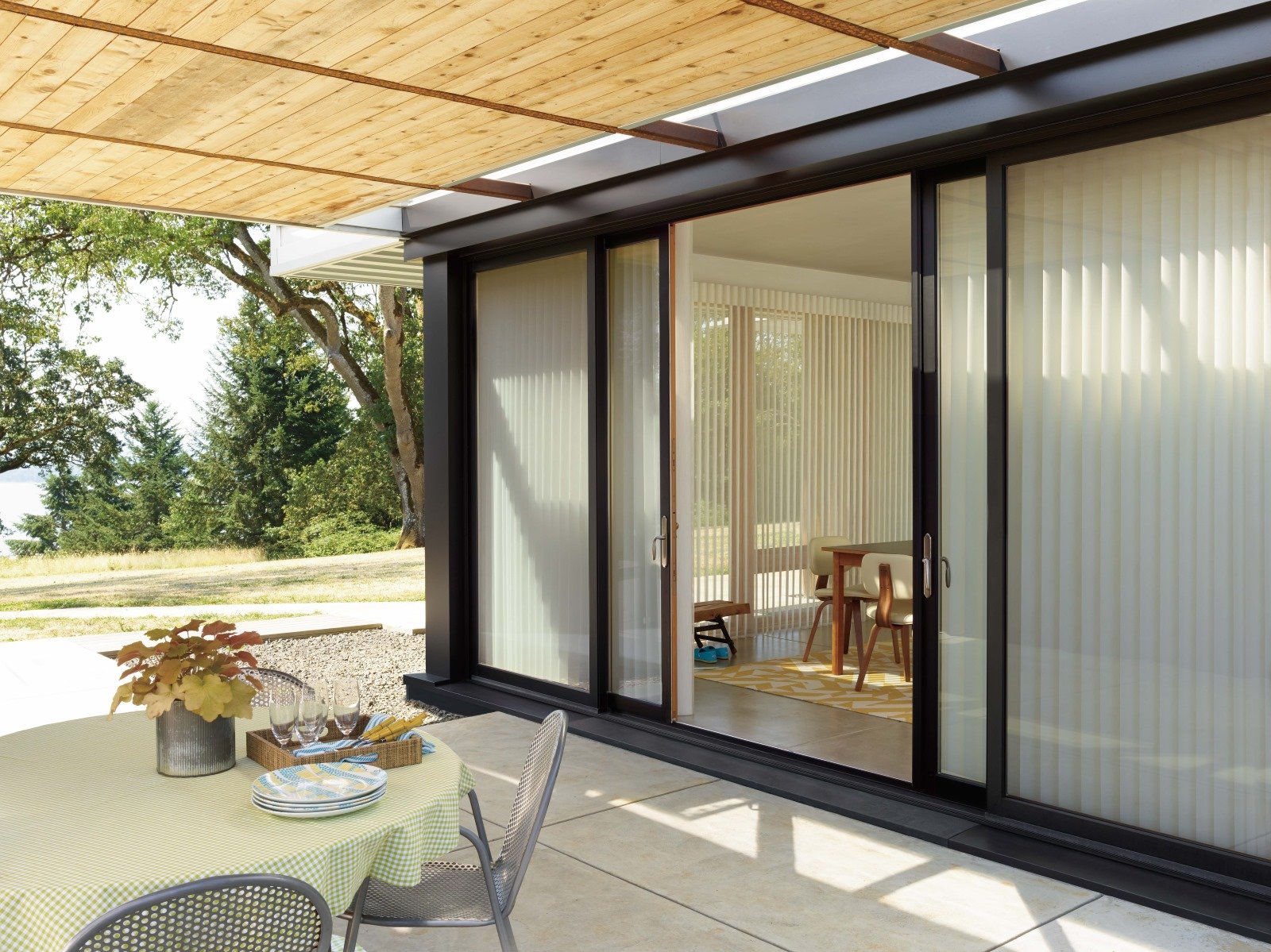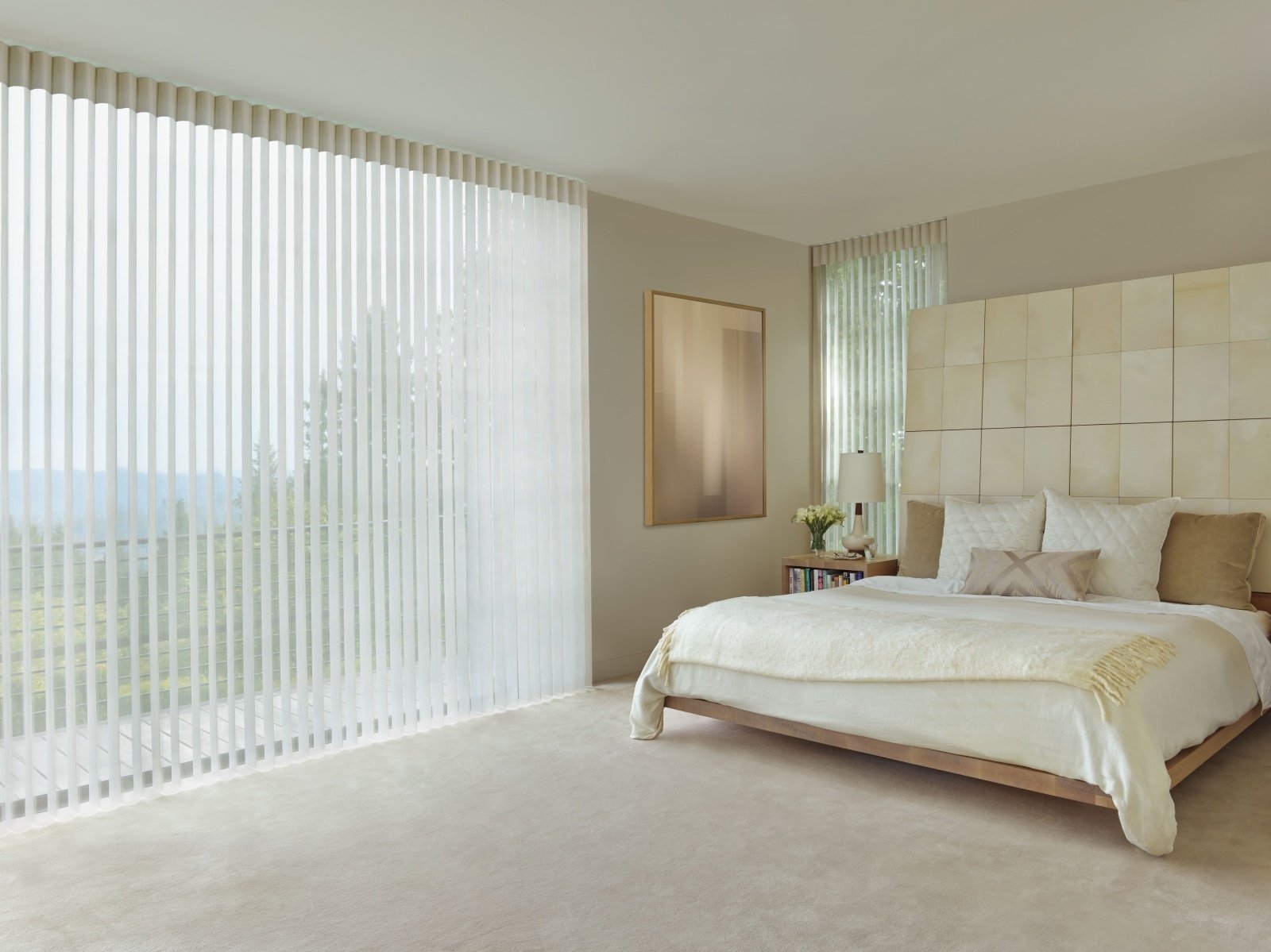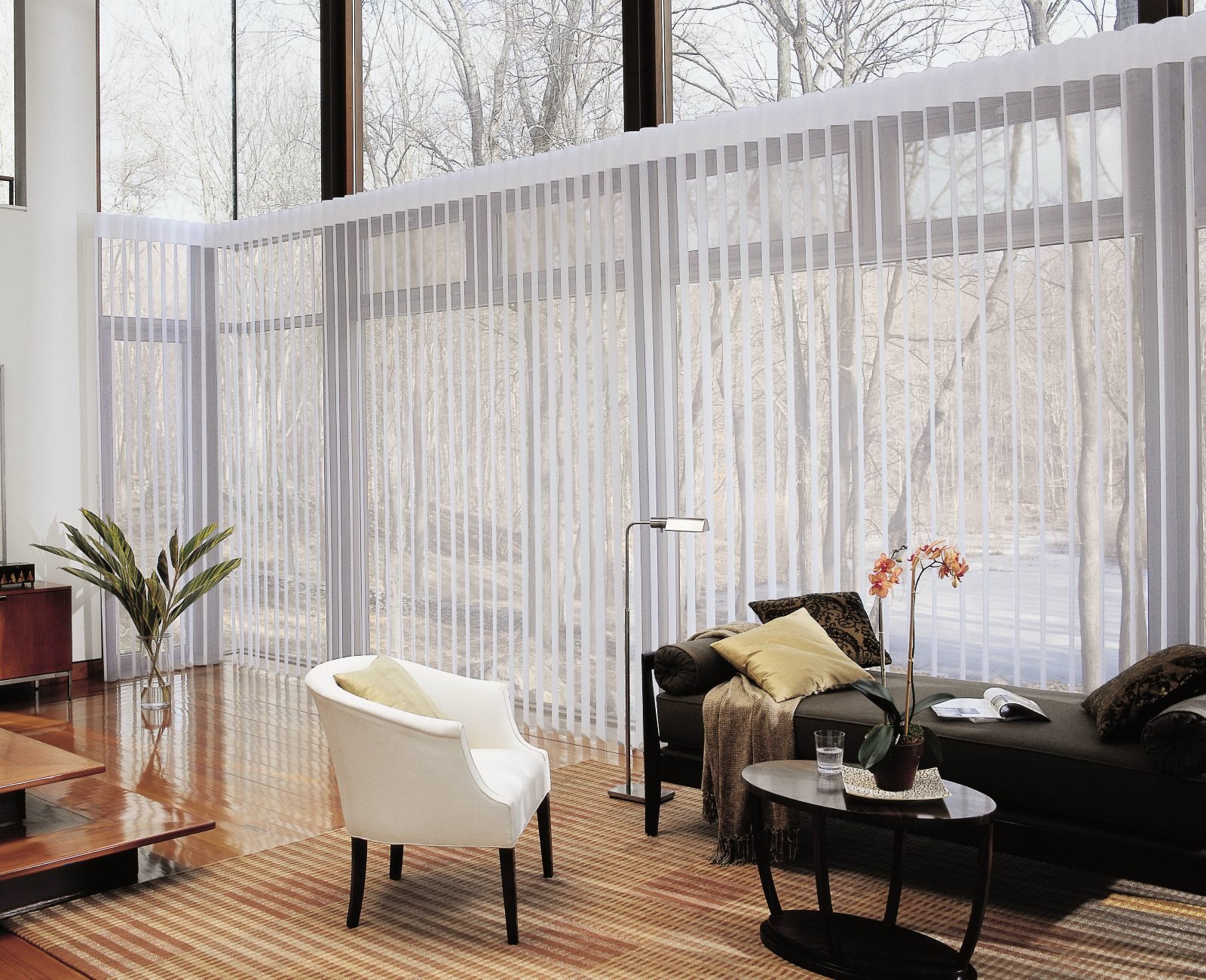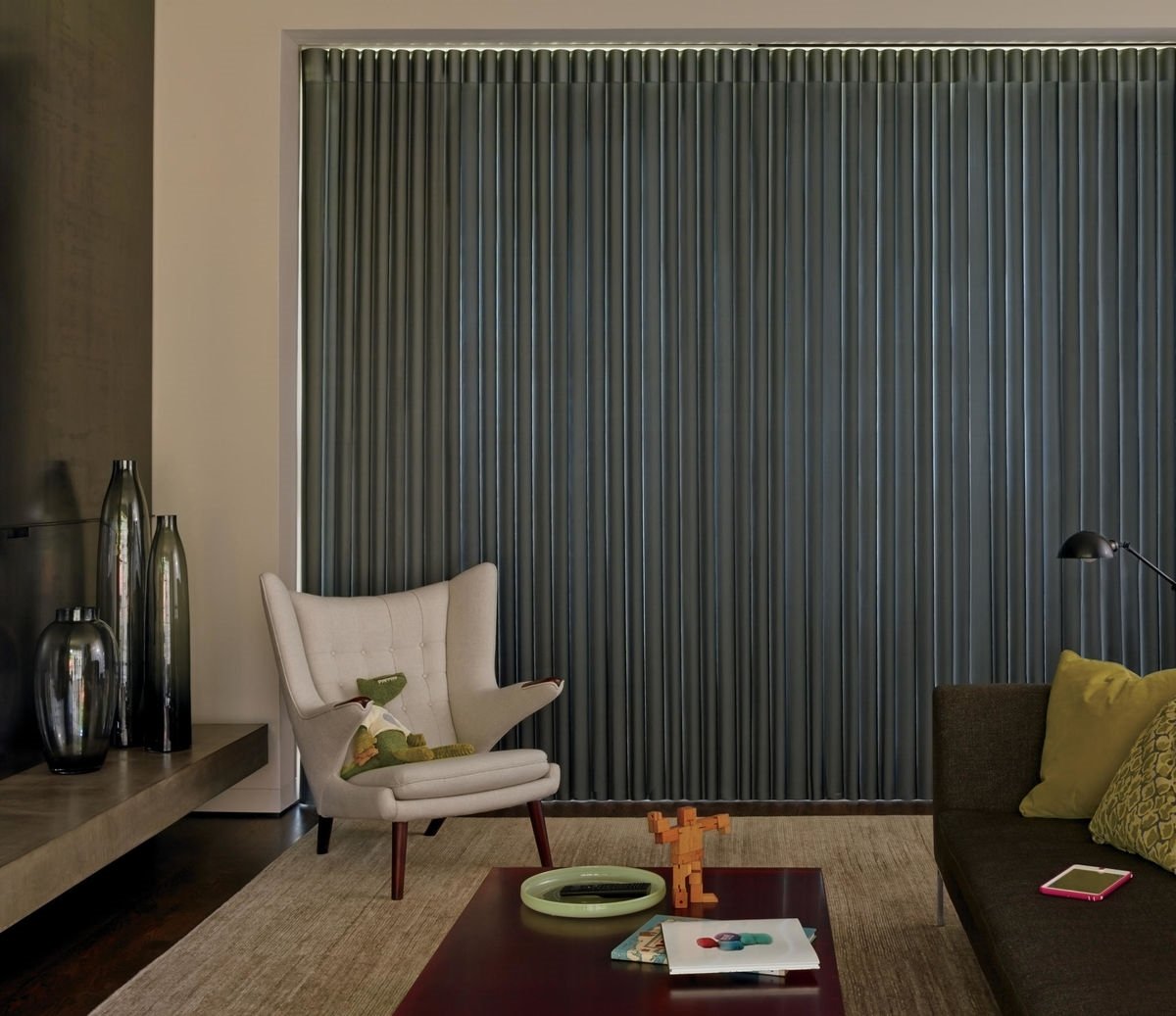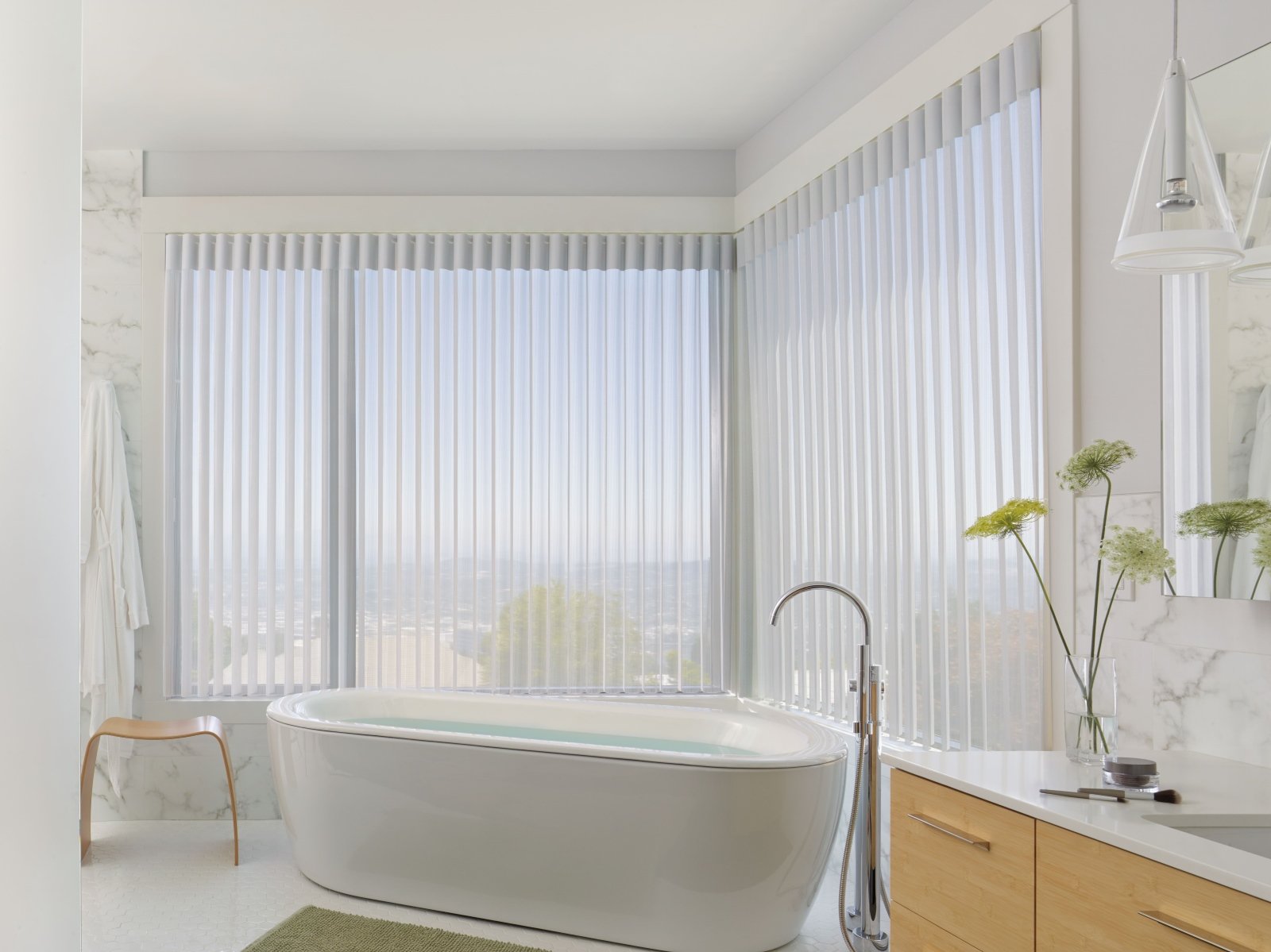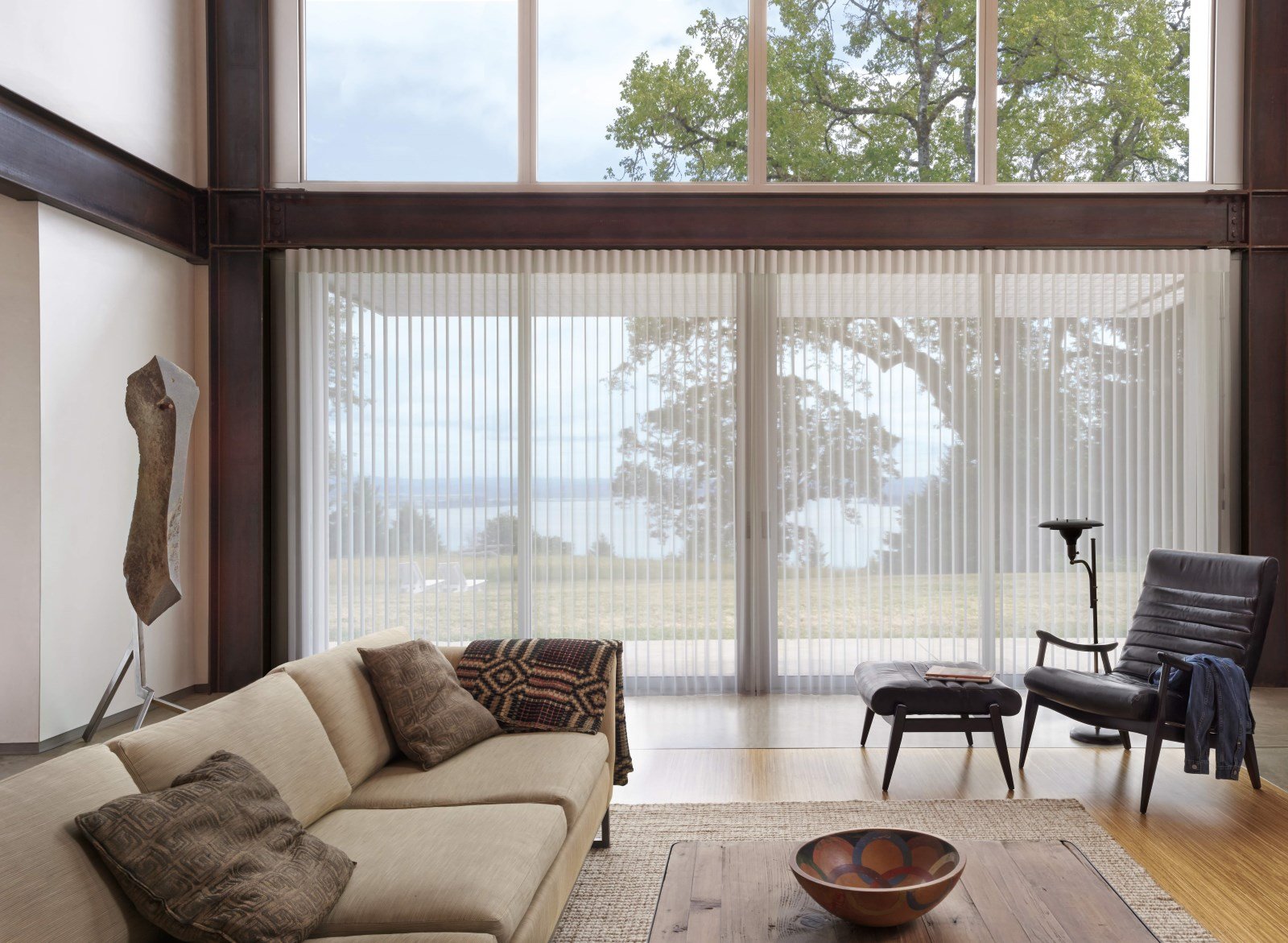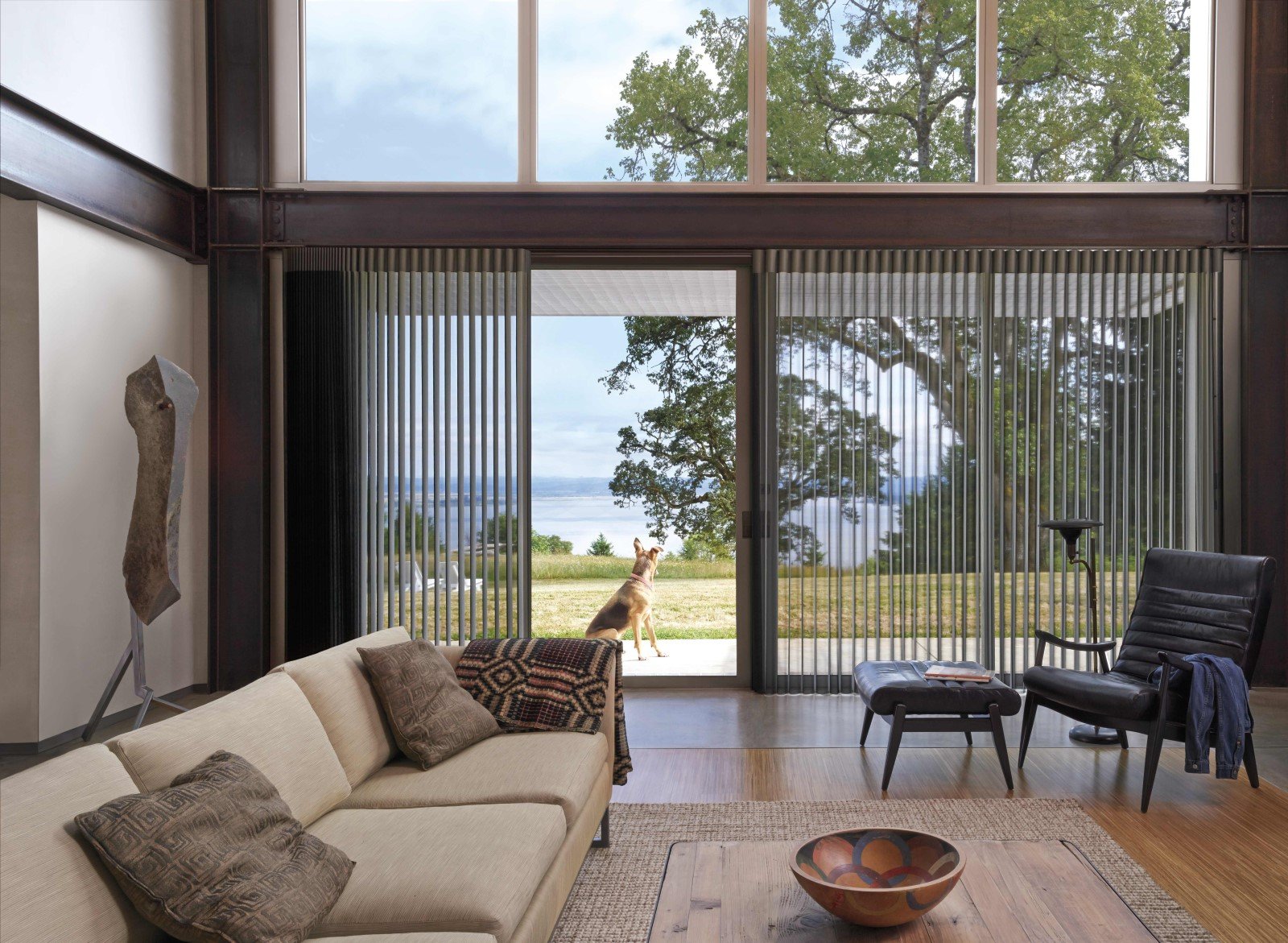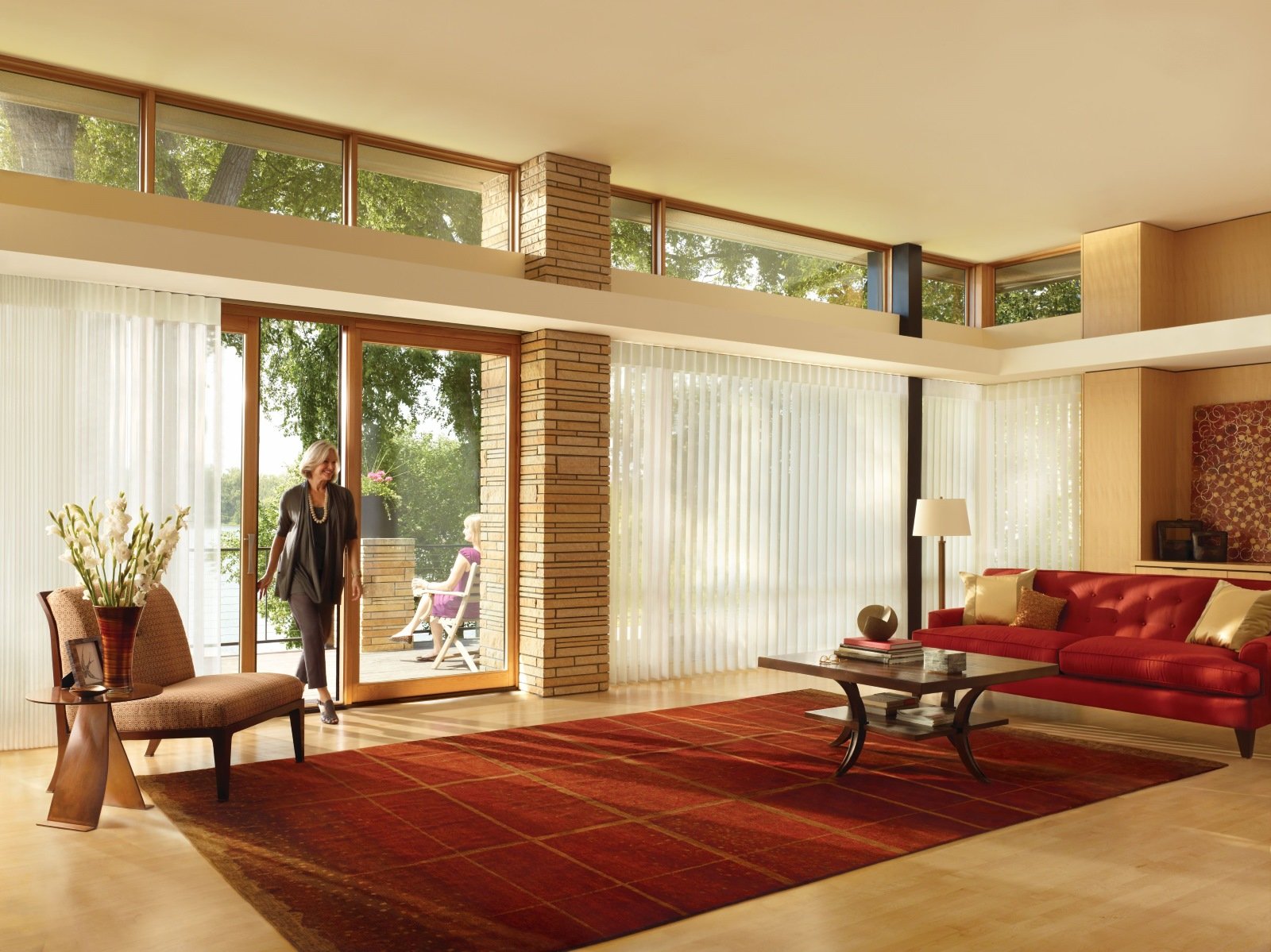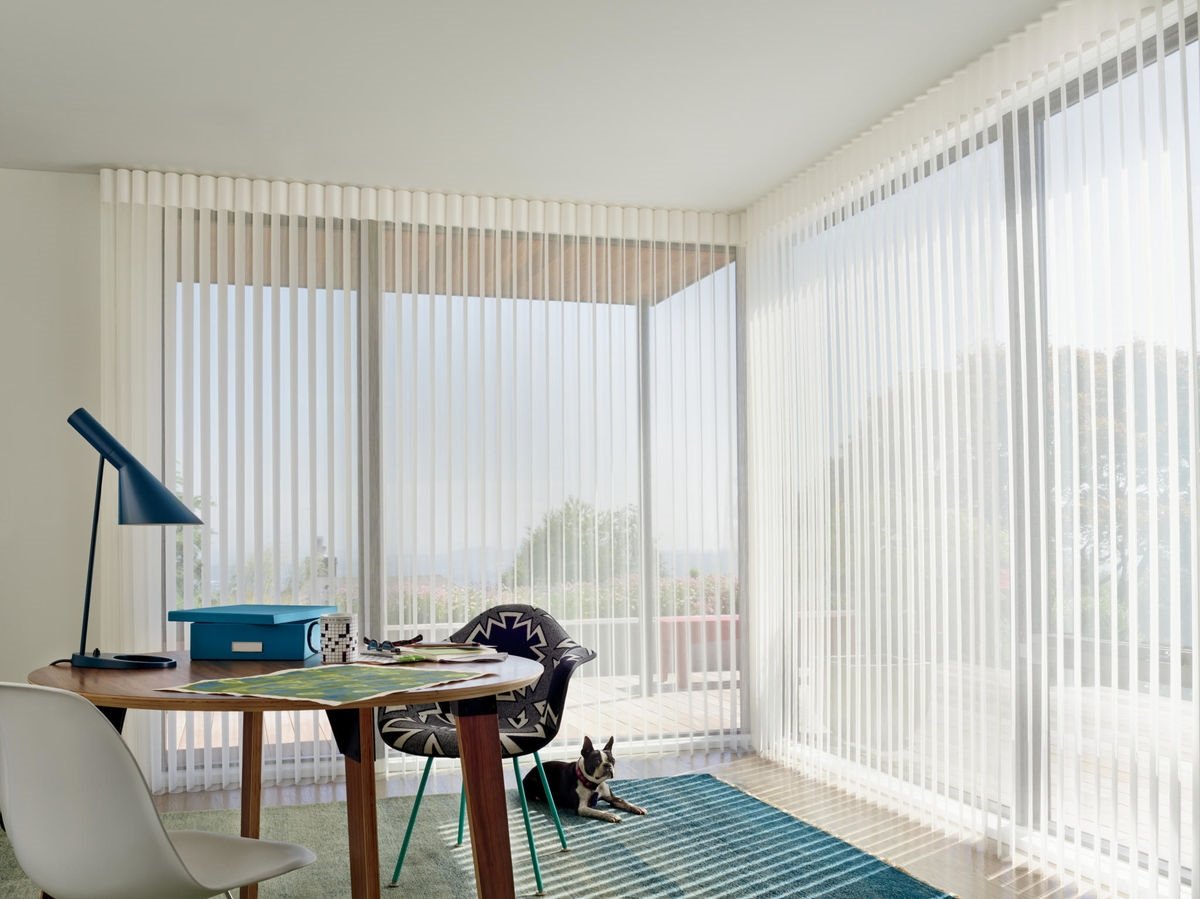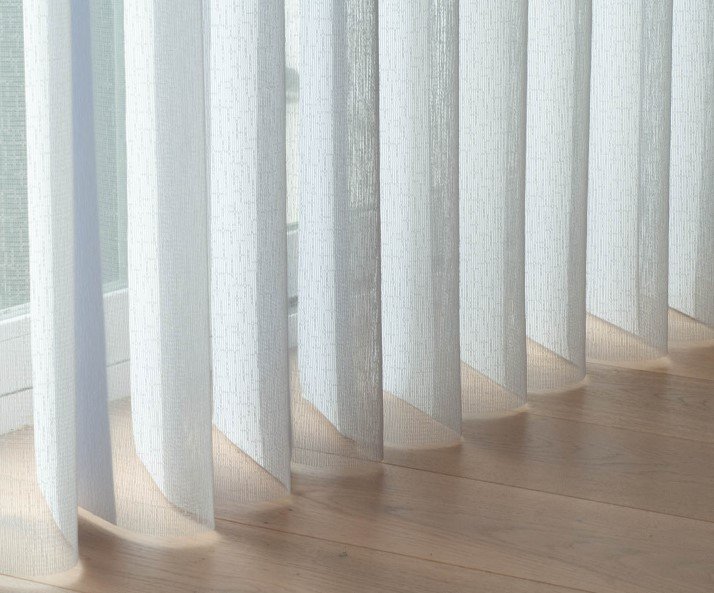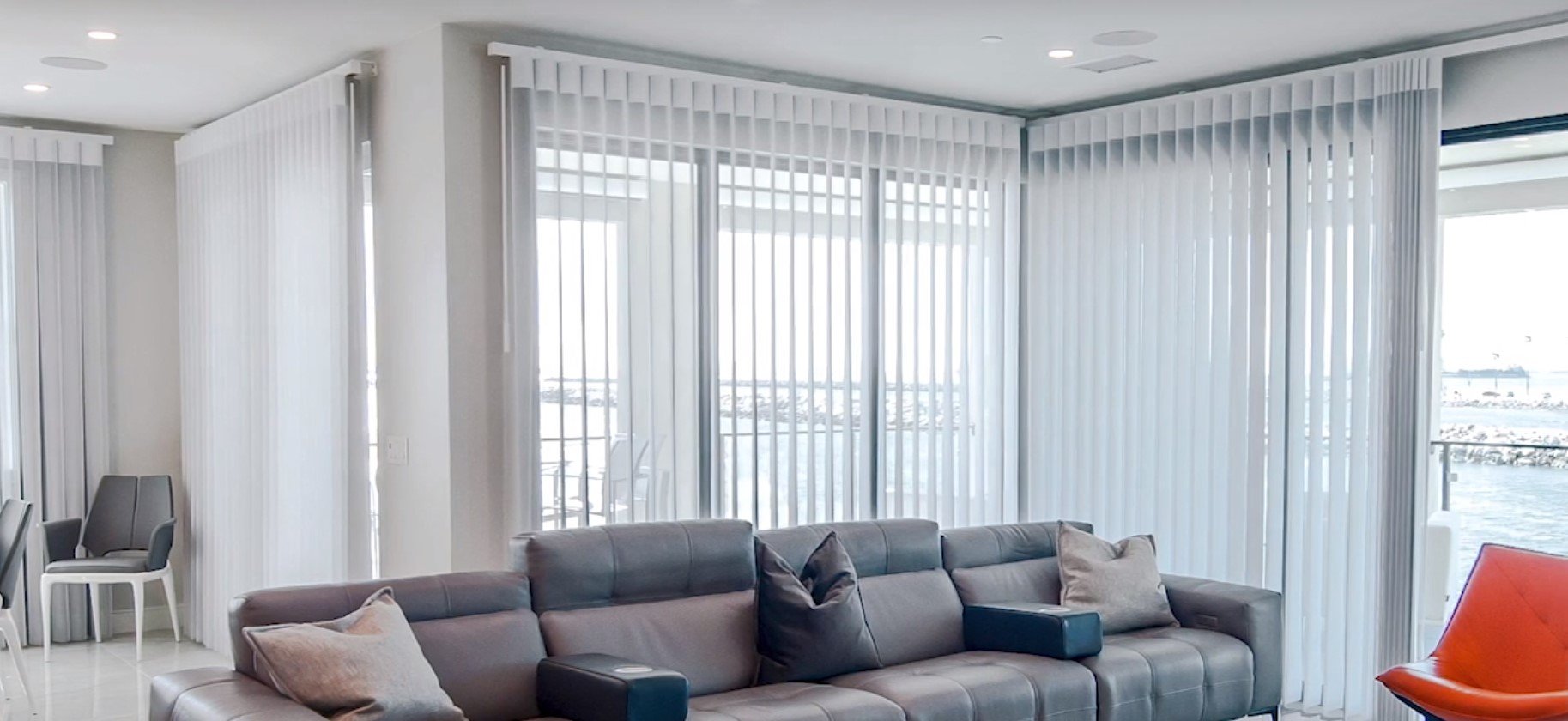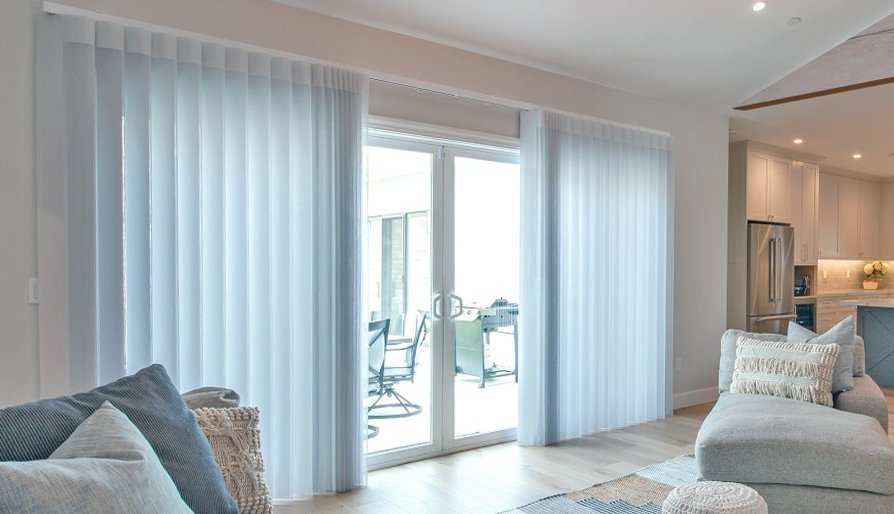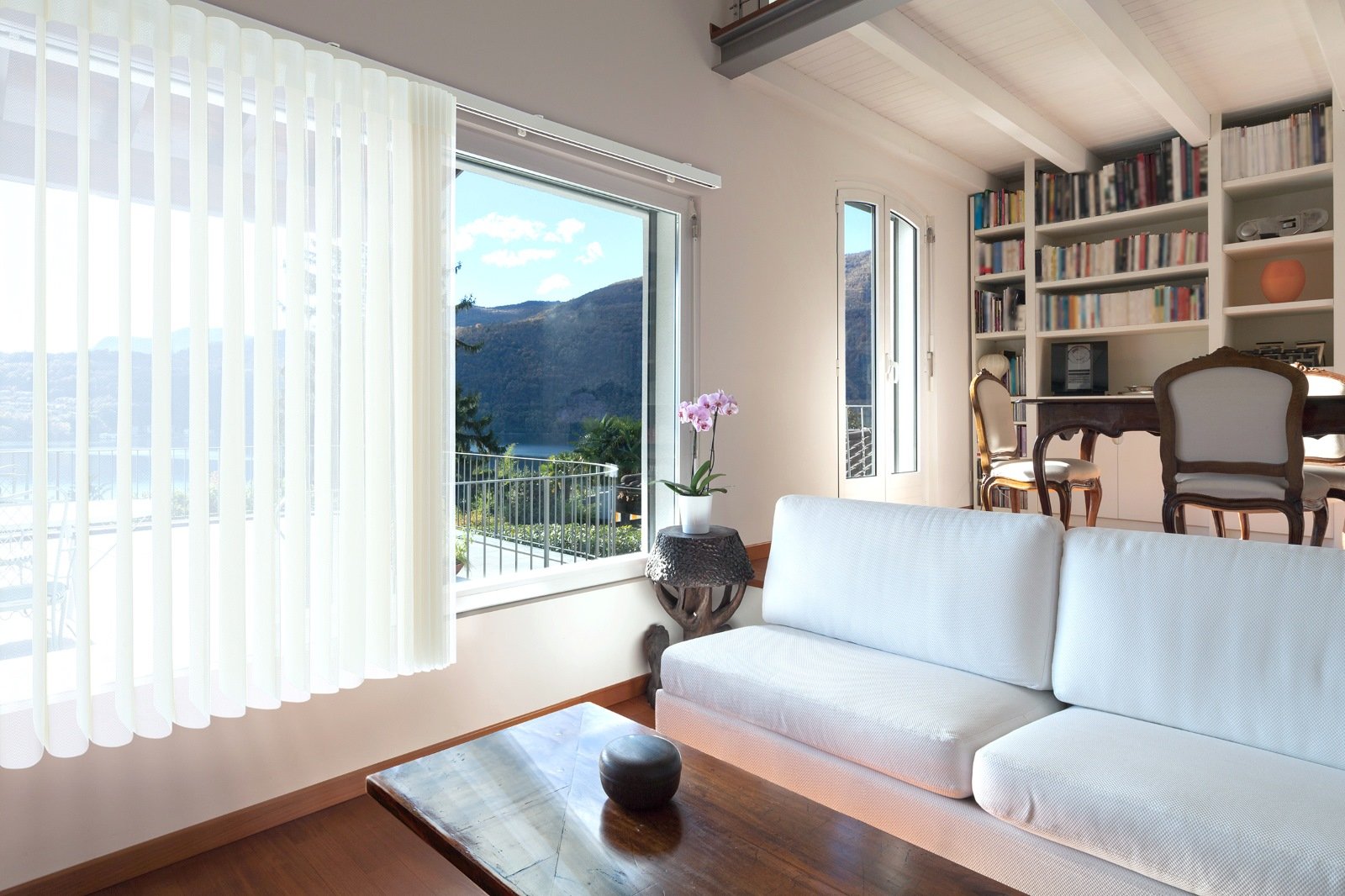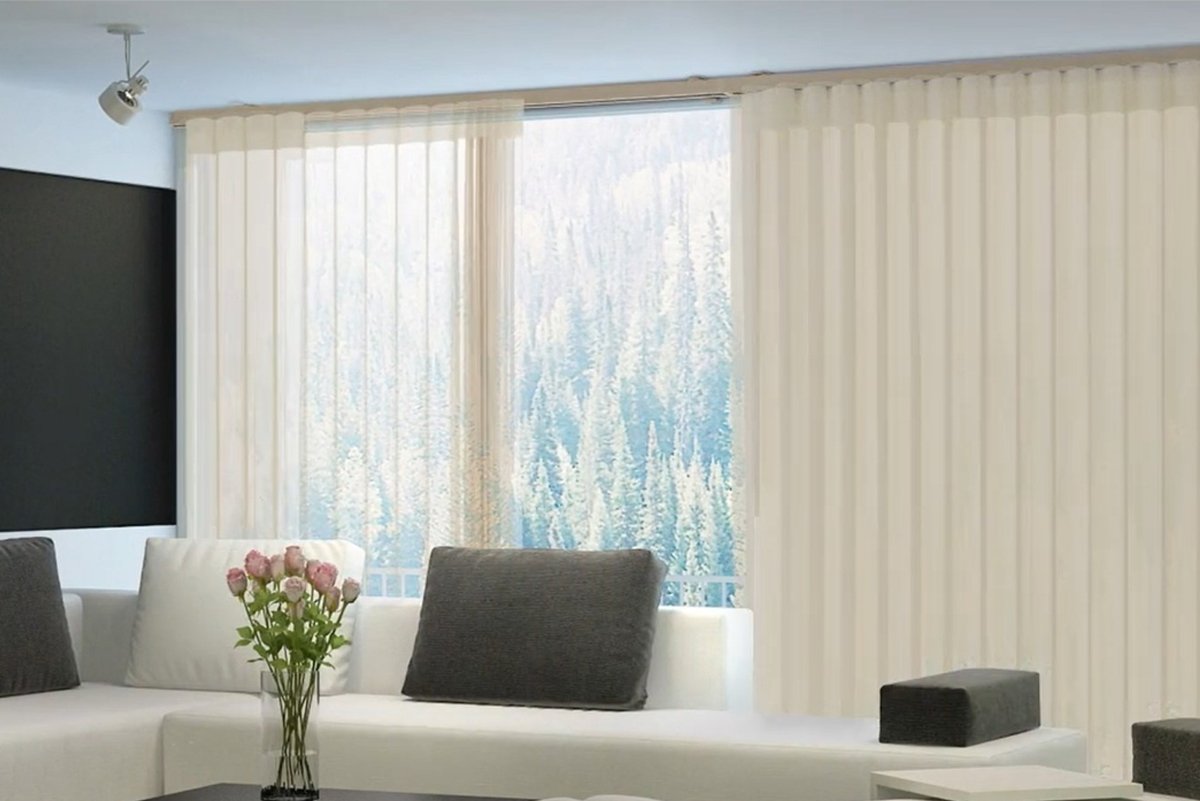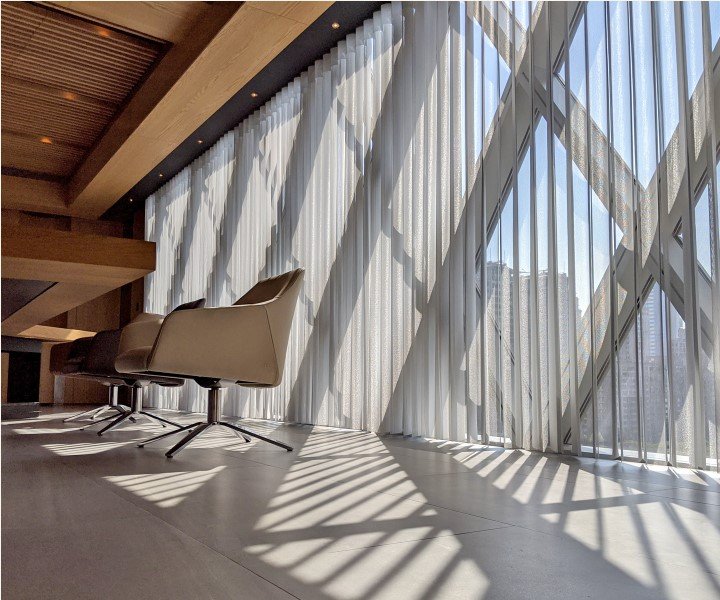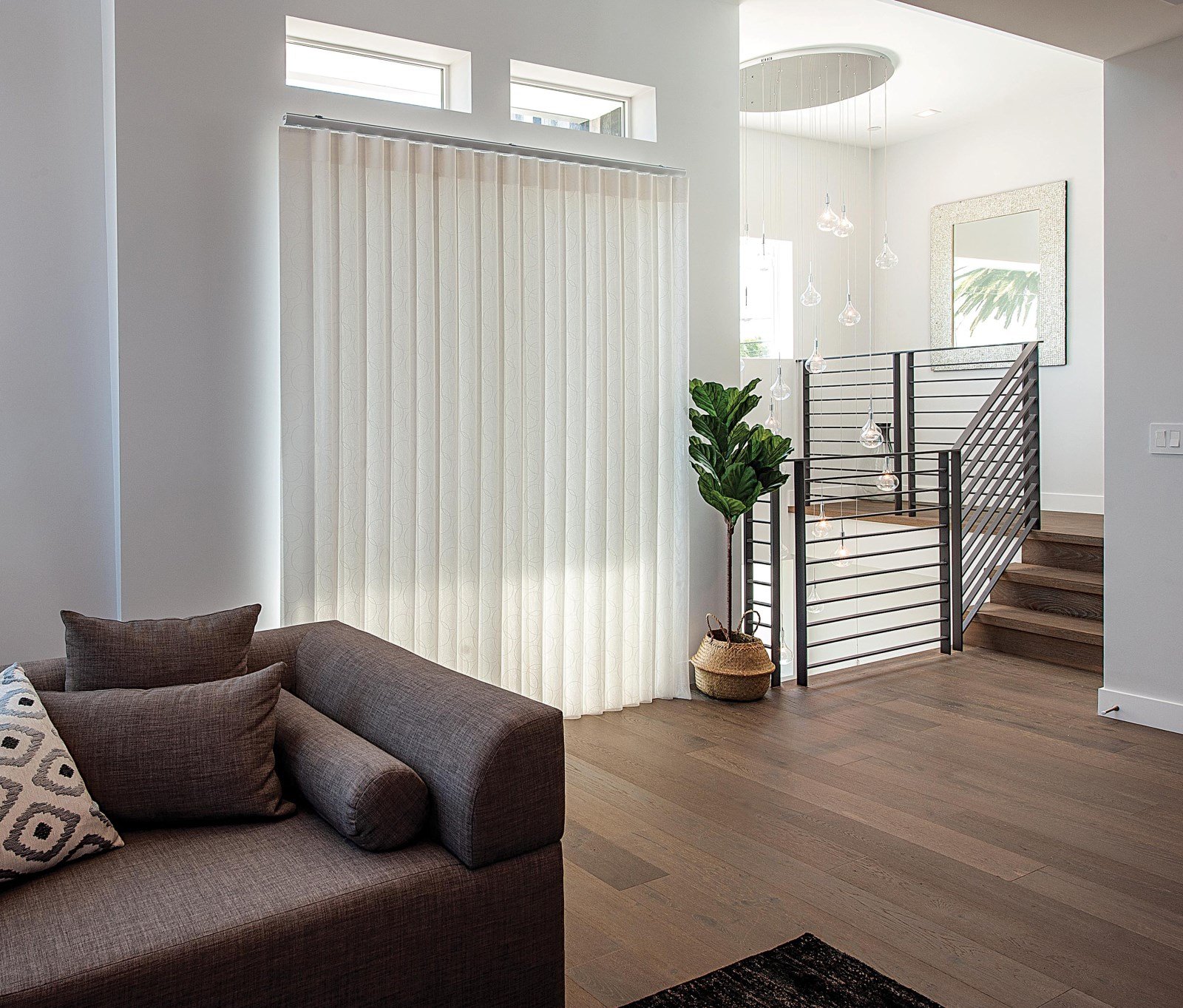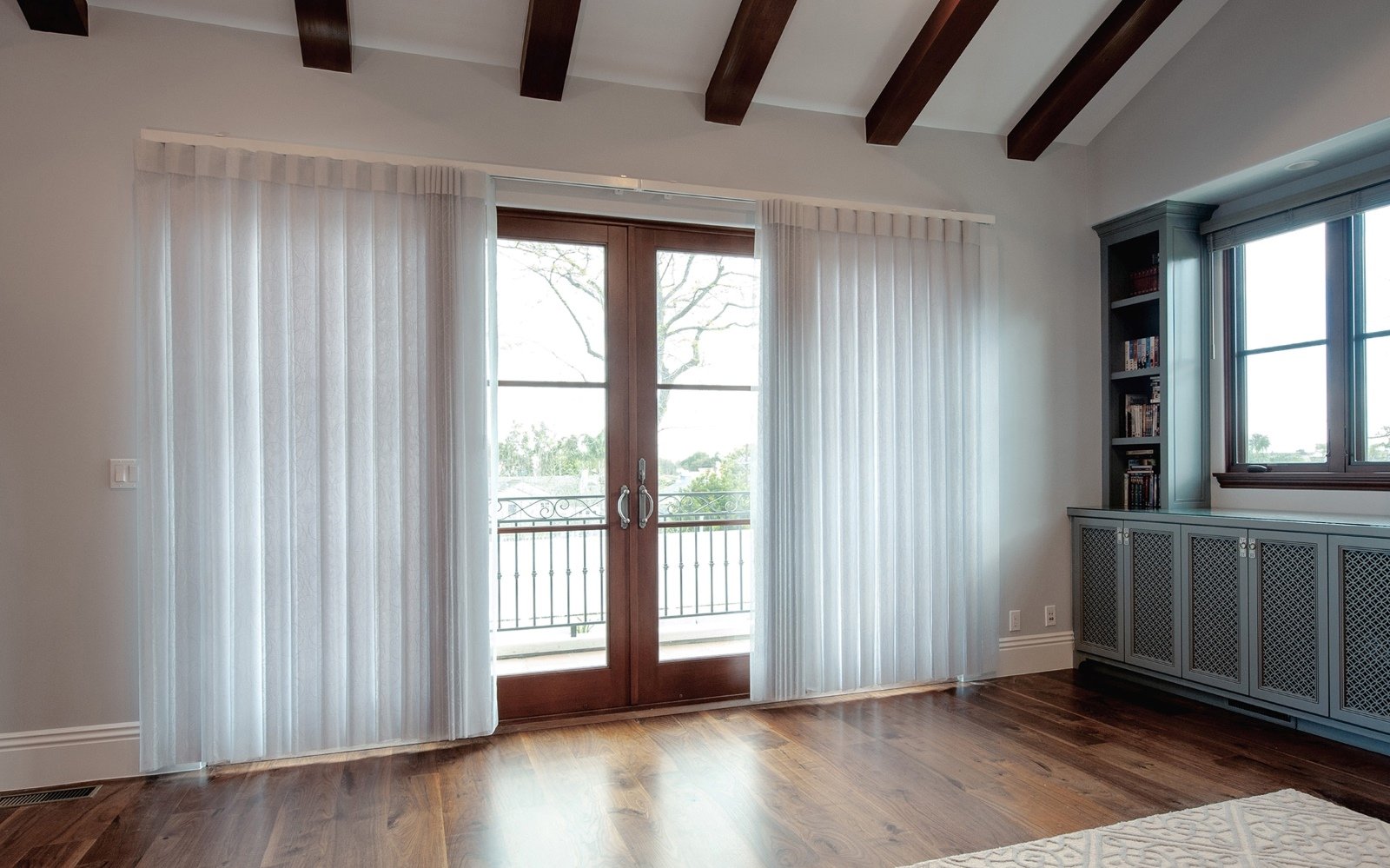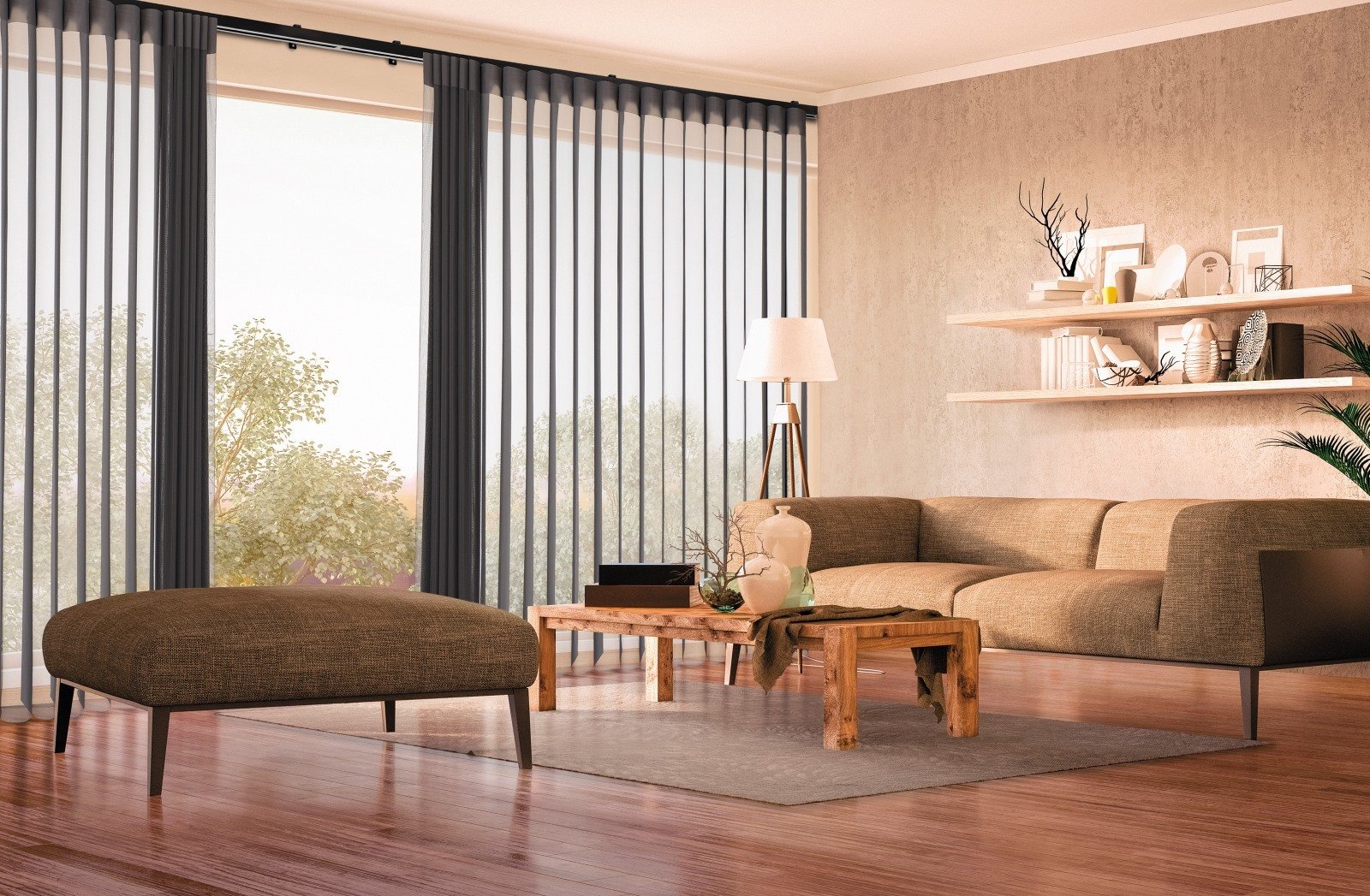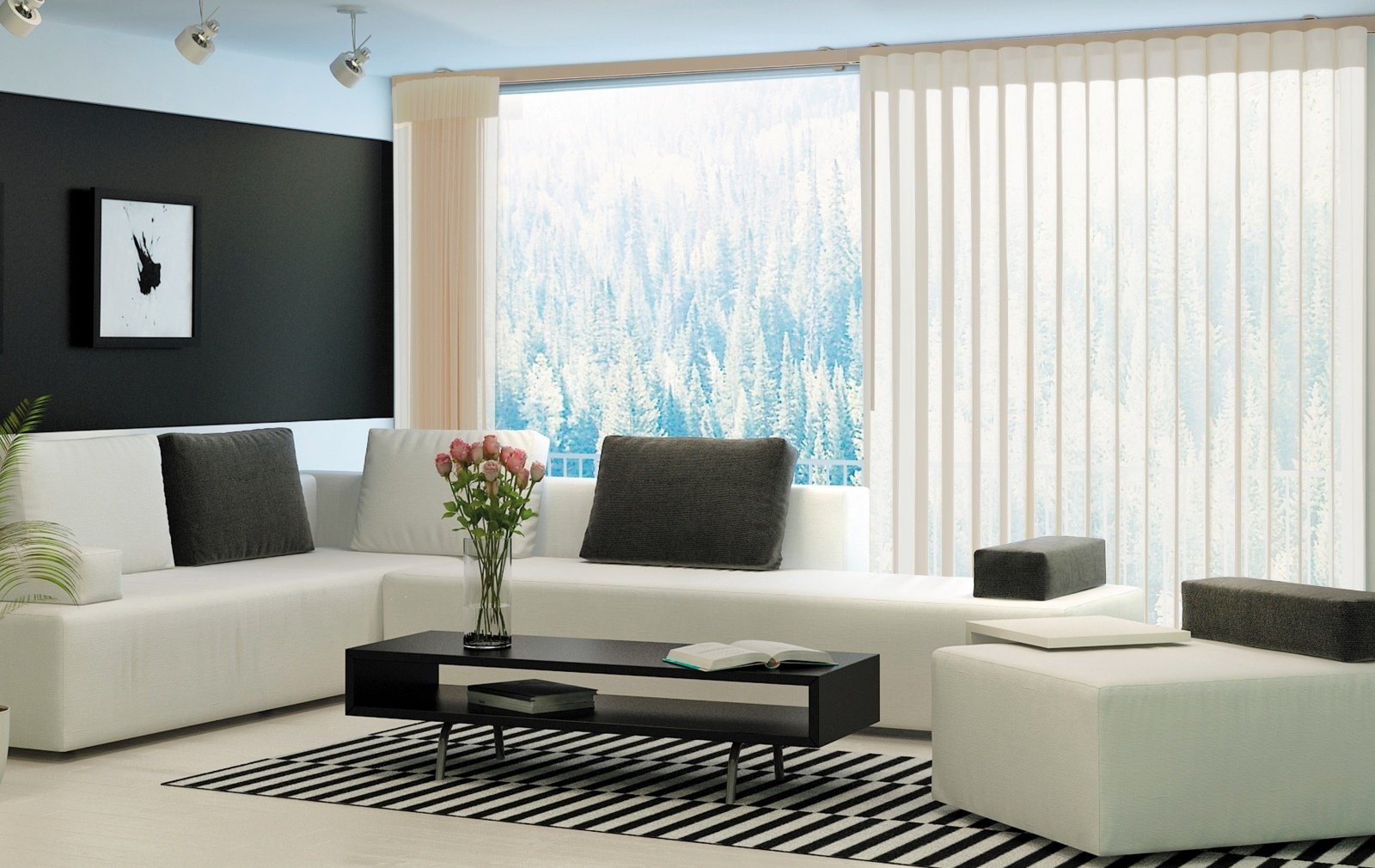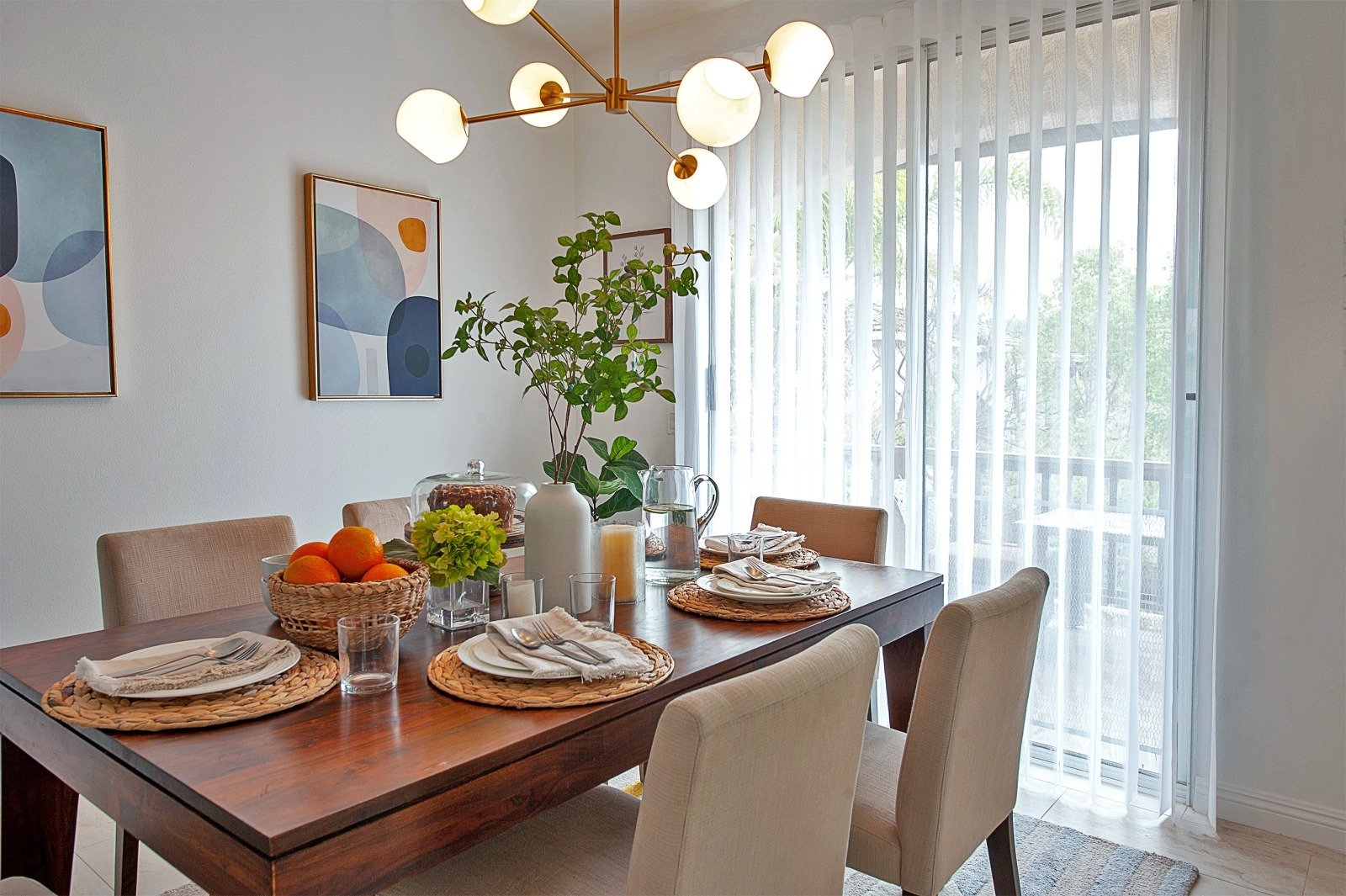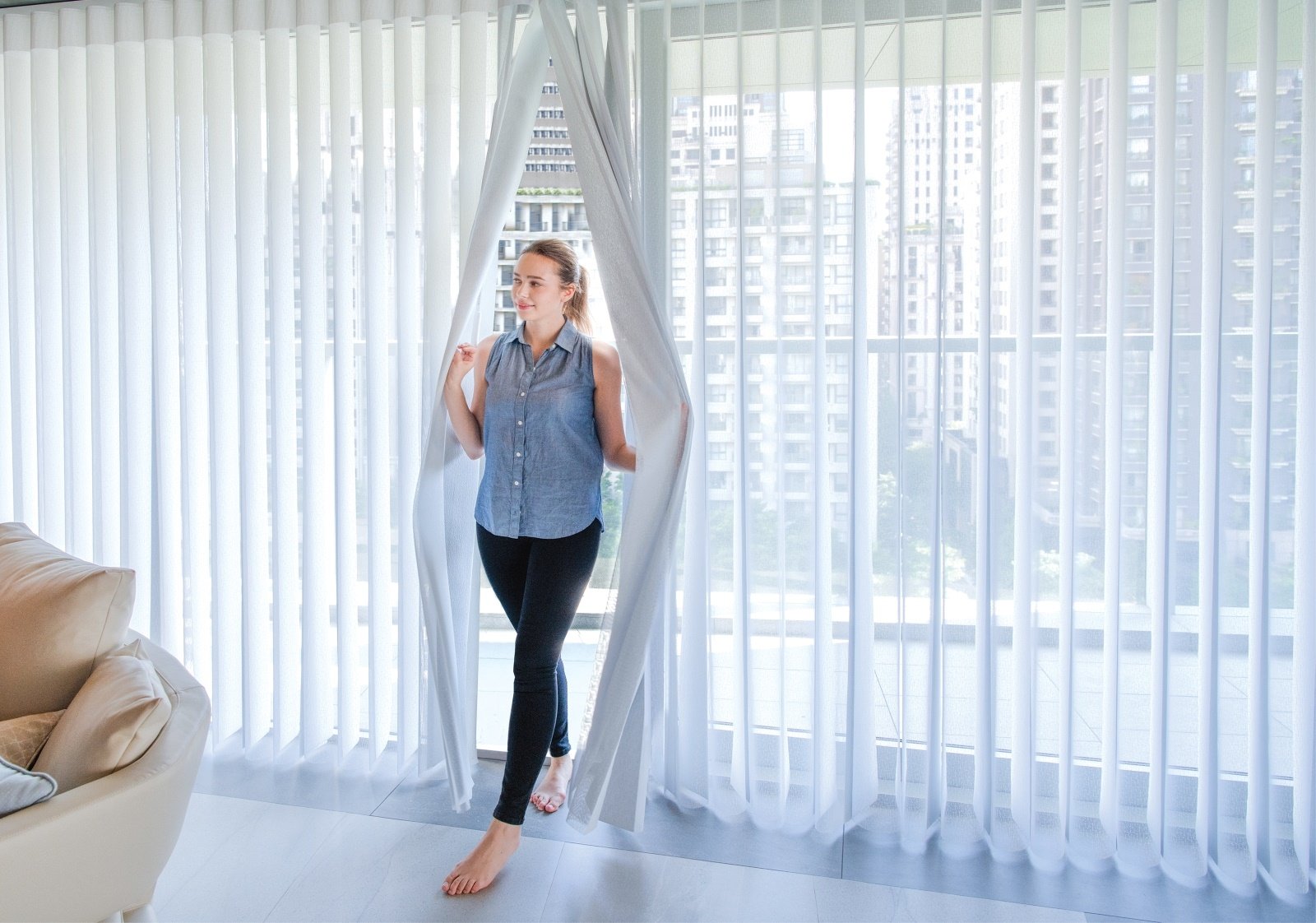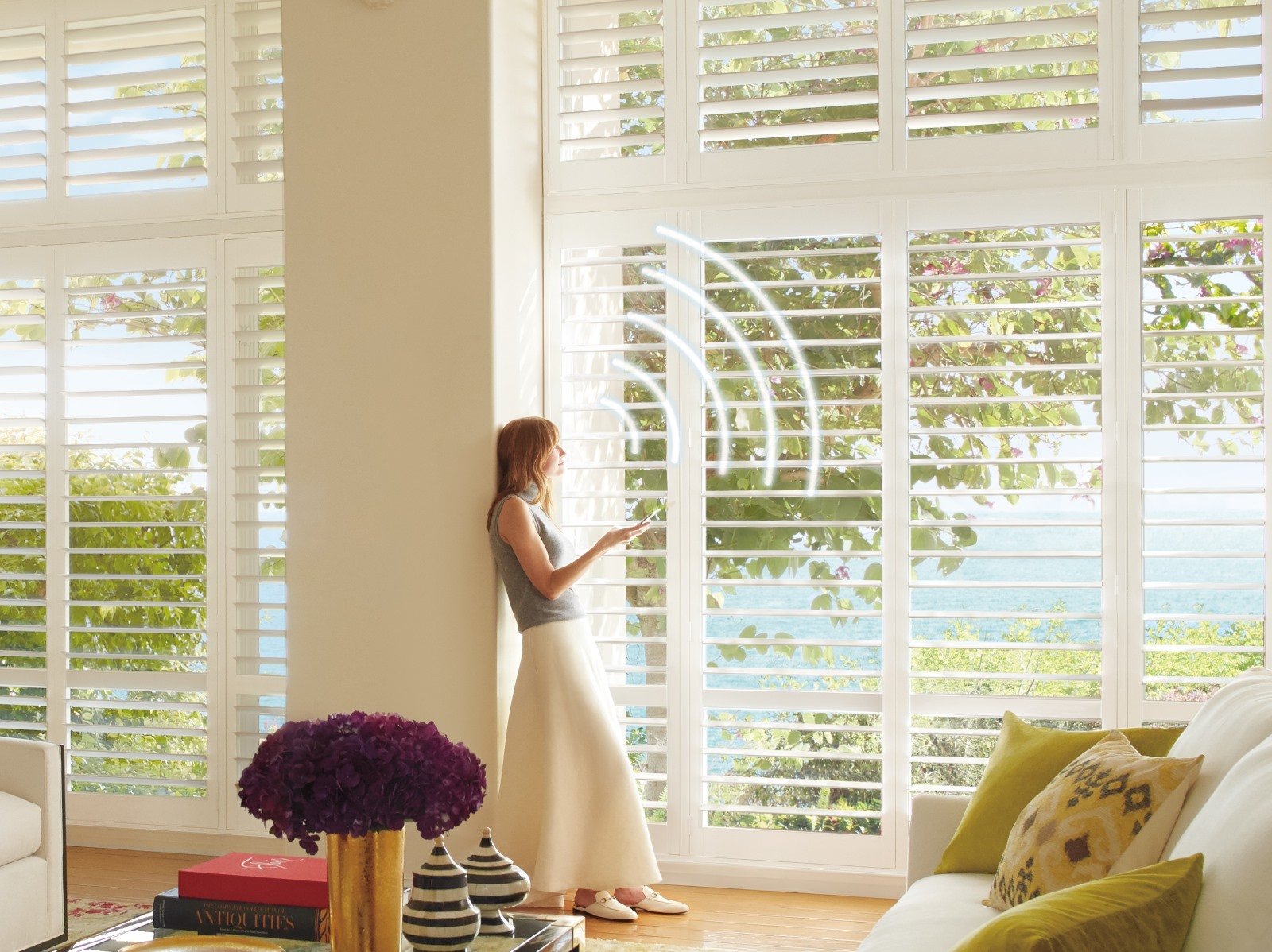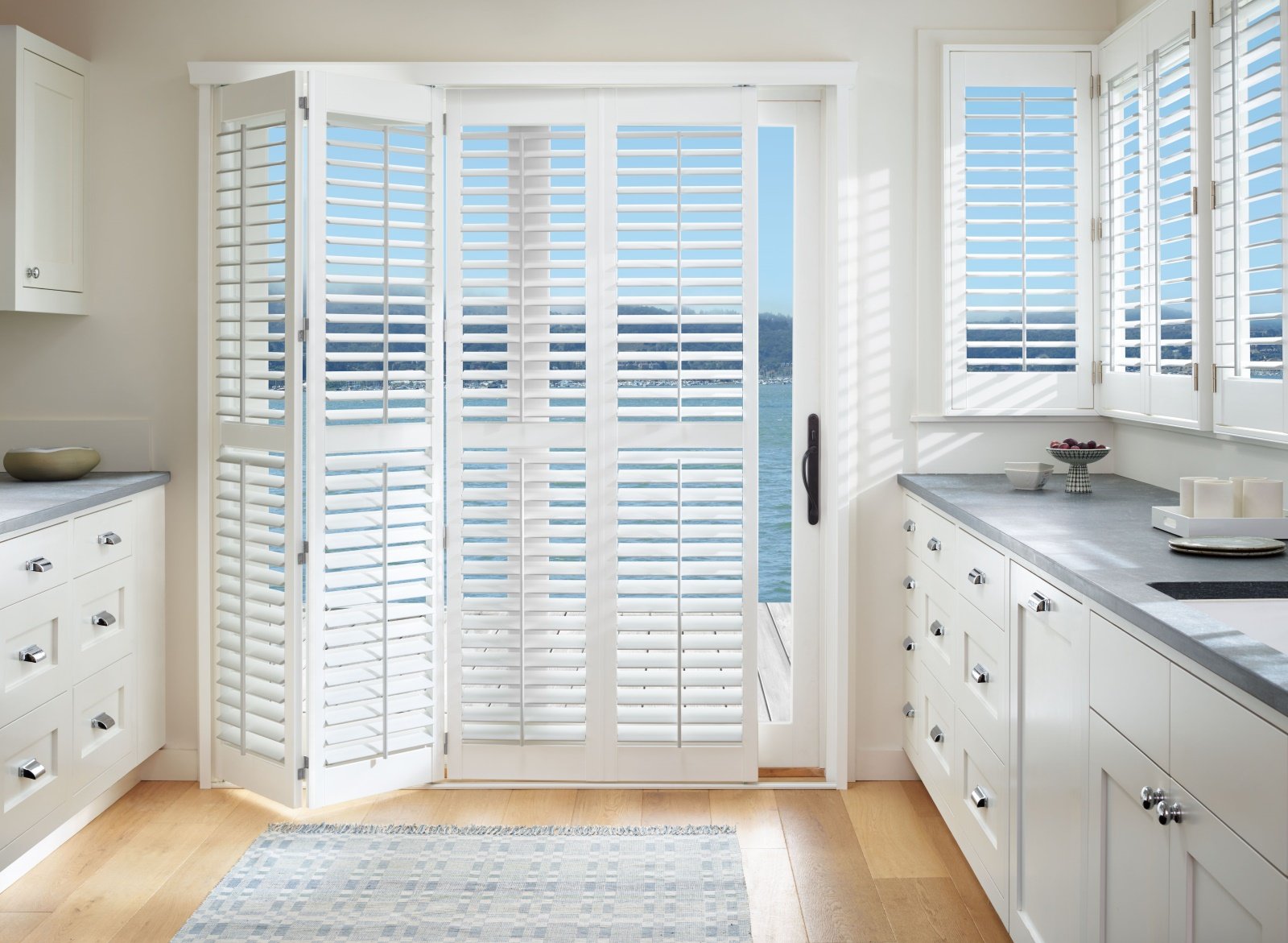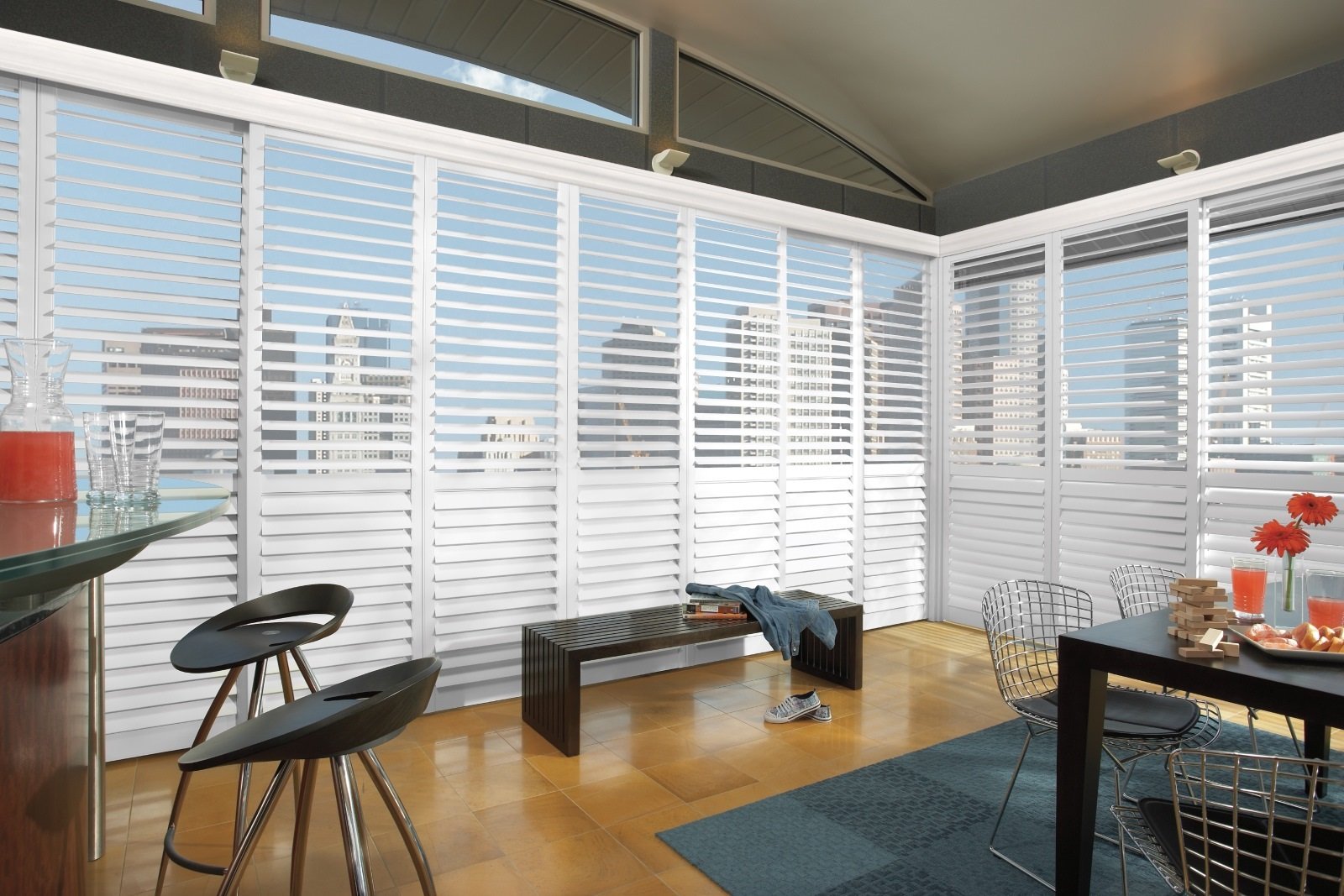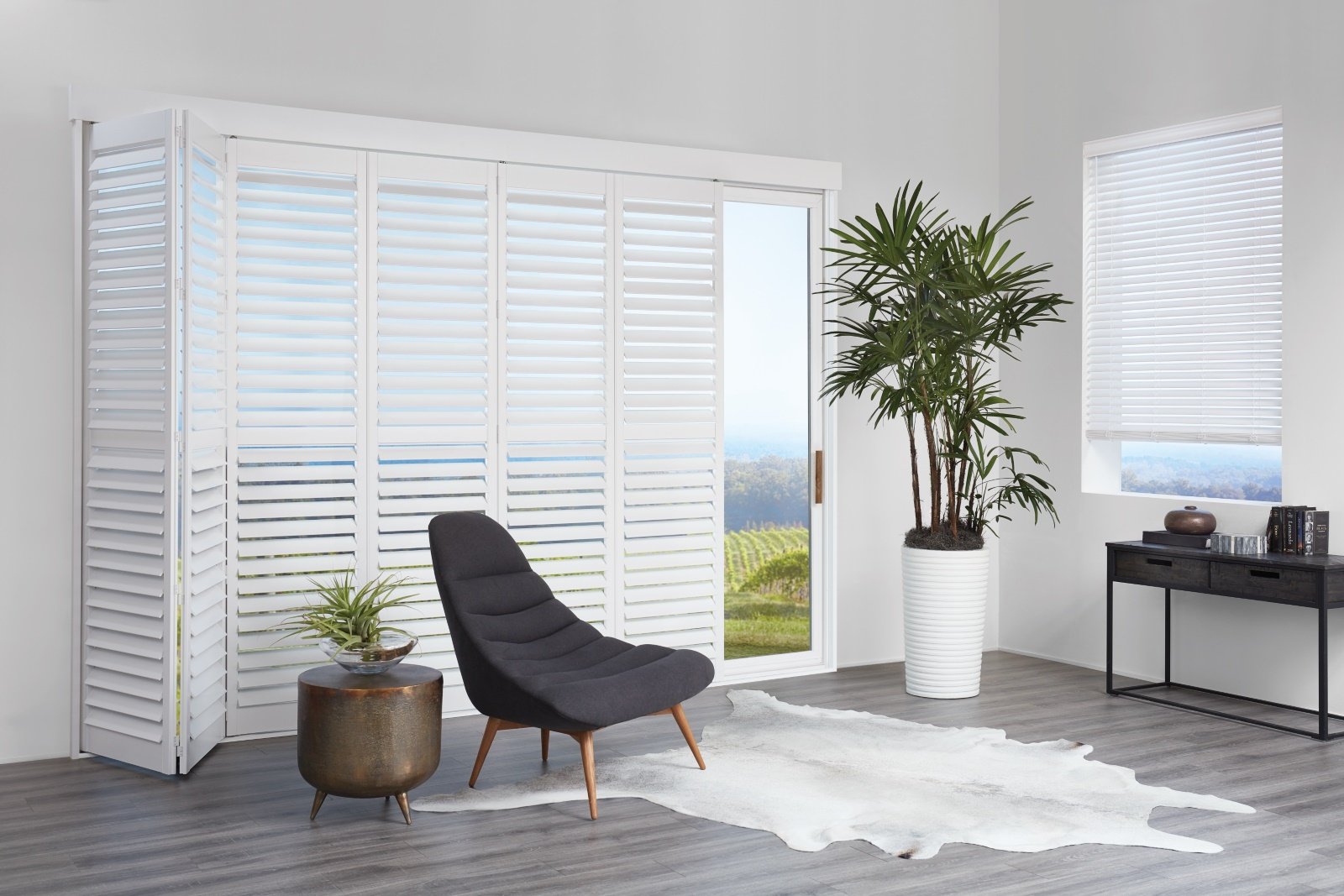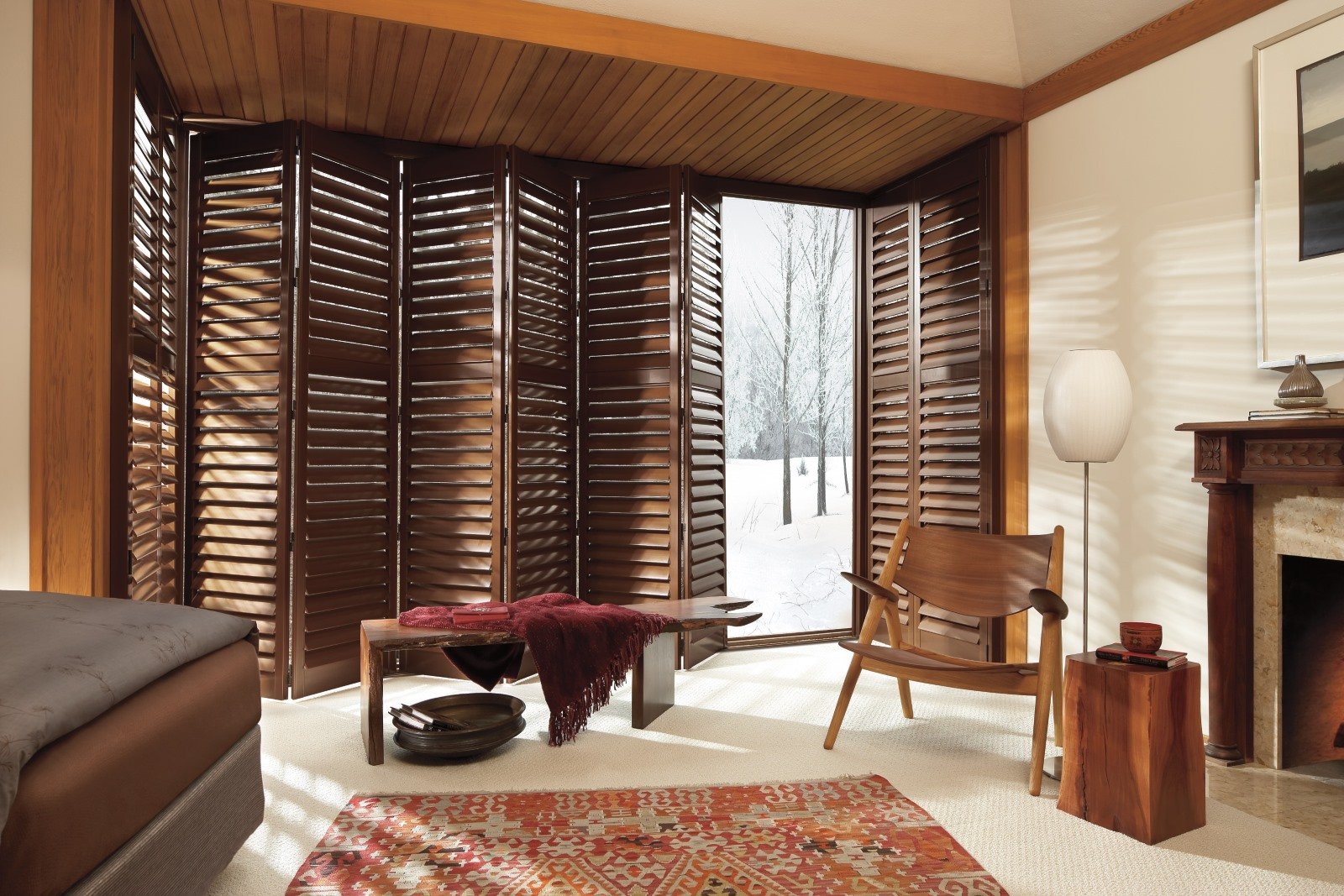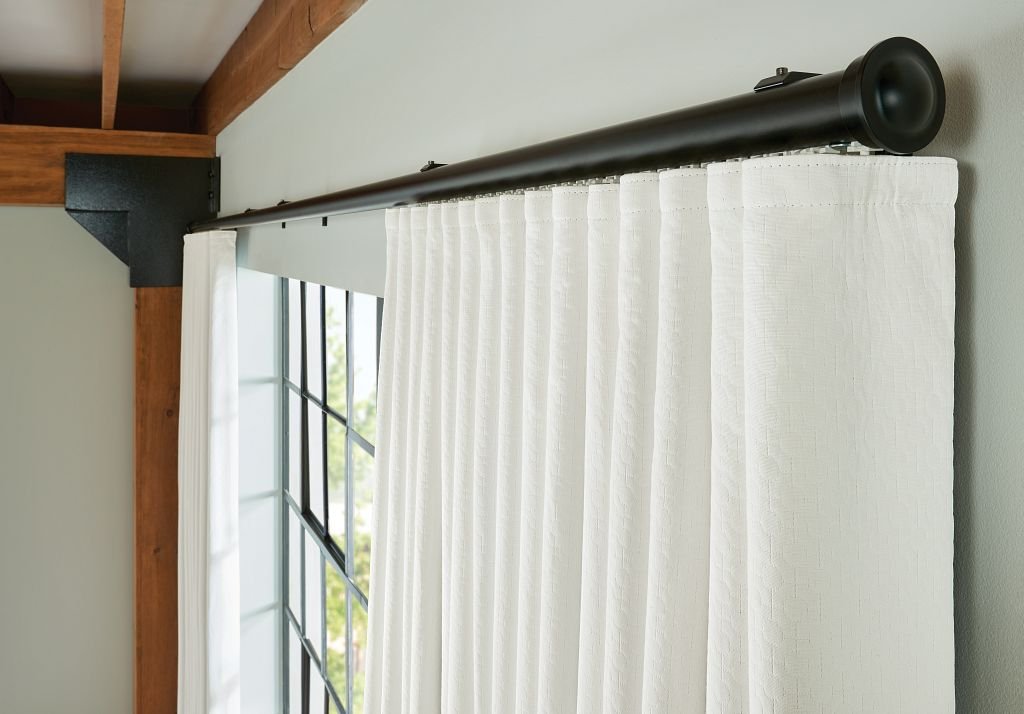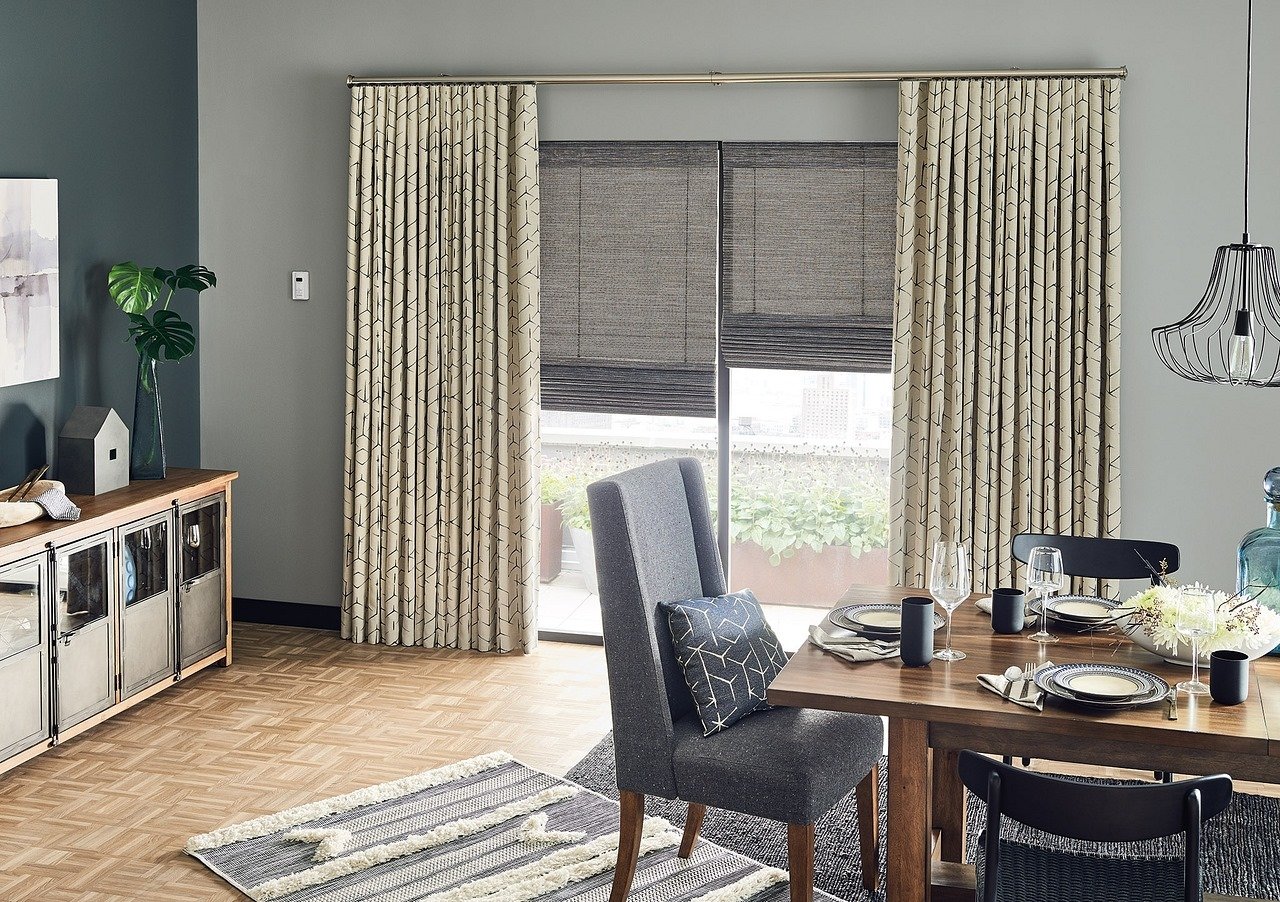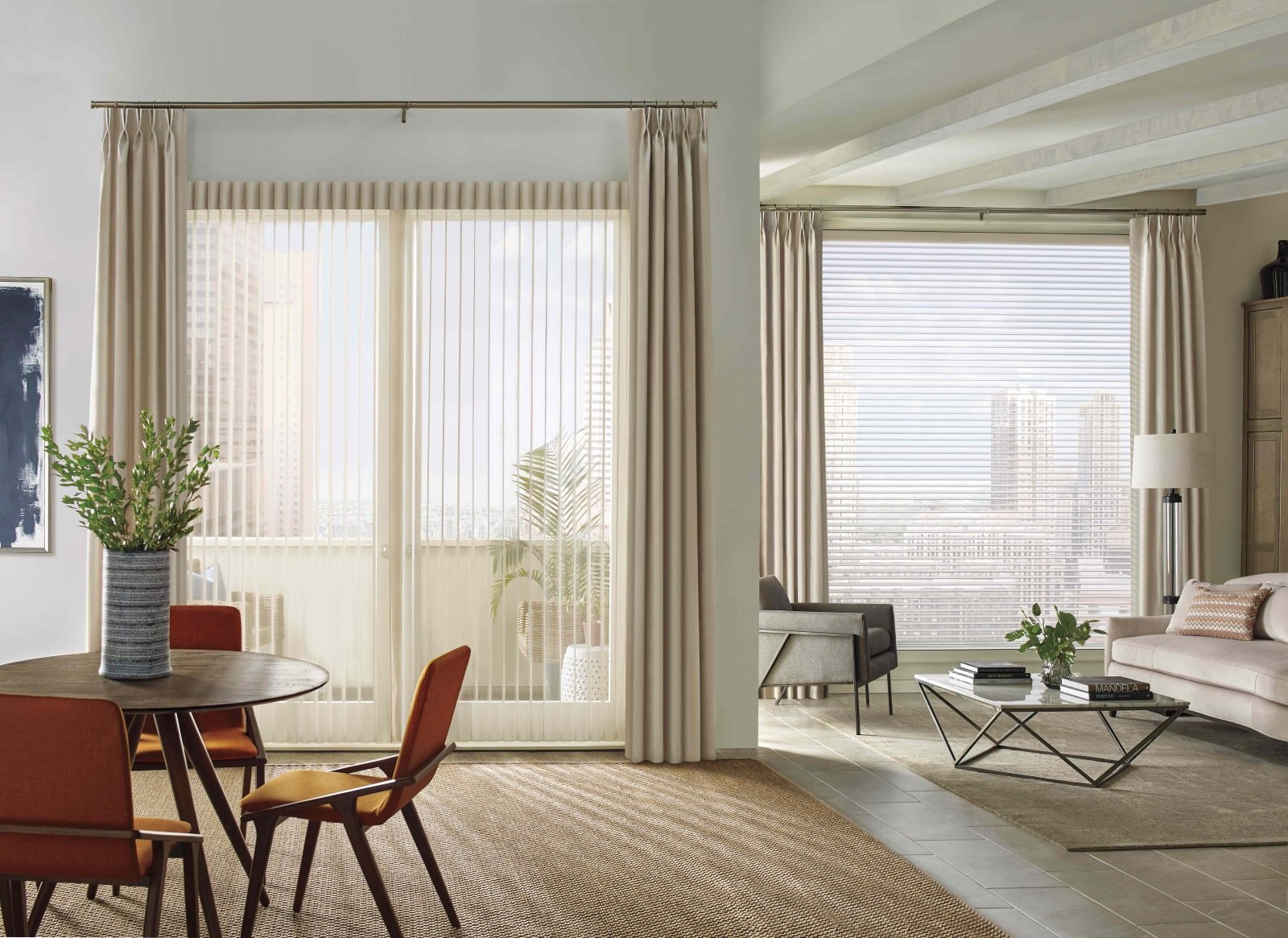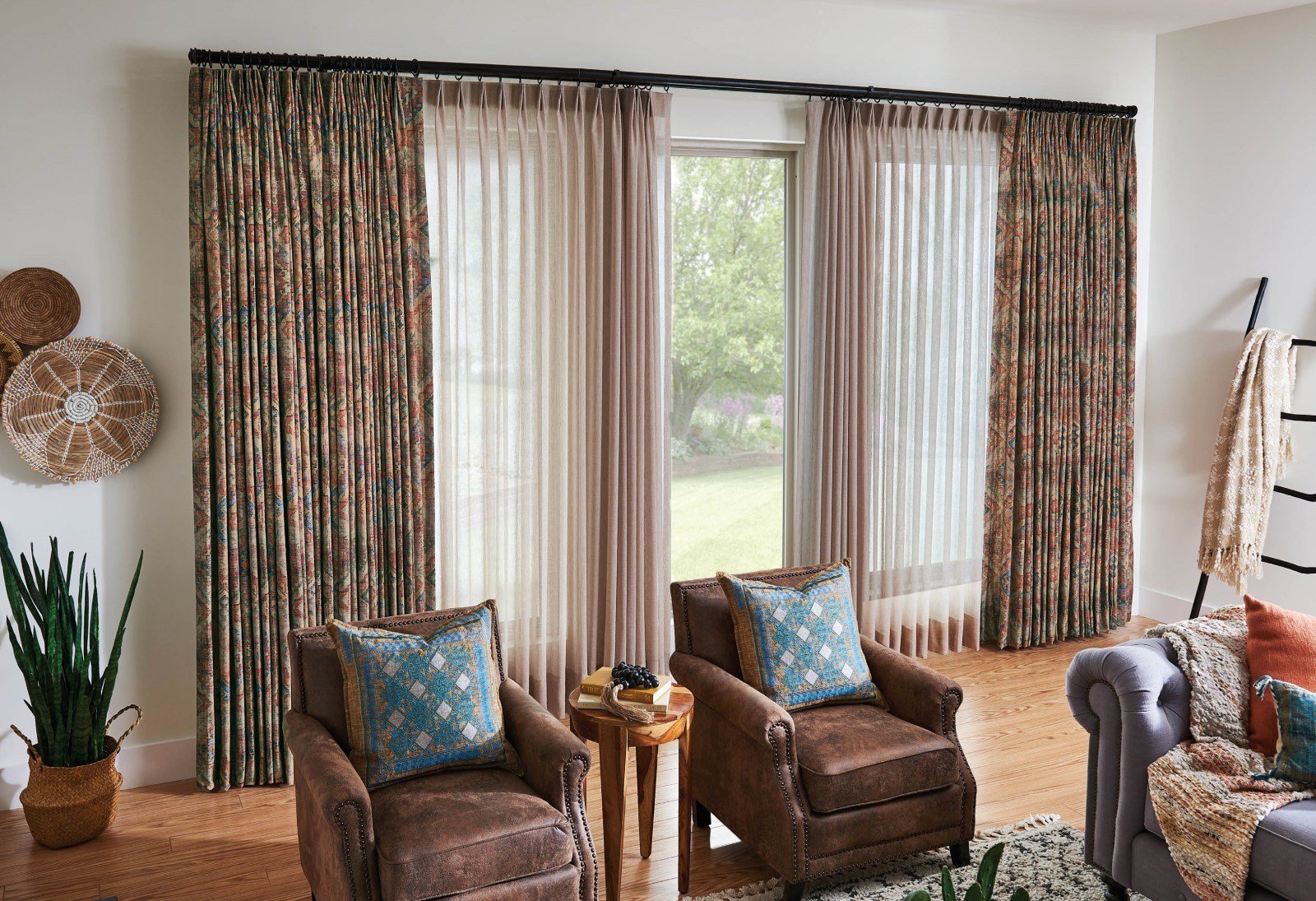Window Treatments for Sliding Patio Doors
How to cover sliding doors with window coverings for privacy, UV protection, heat reduction, energy efficiency, light control and more.
Sliding glass doors are often the biggest challenge we face when working with home owners on putting together a window treatment package. They pose several challenges, so we typically will start with looking for solutions for the doors, and coordinate adjacent windows from there. So what are some of the challenges that you want to consider when planning for blinds on patio doors?
Functionality
Arguably the most important factor to consider when thinking about treatments for sliding glass doors is functionality. First, consider HOW, WHY & WHEN are they used? How often do the doors get opened and closed? Where do they lead to? What times of day are they typically being accessed? What direction do they face? Are pets using the doors to access the back yard? All of these factors will have an affect on what type of treatment and what type of operating system will be the best for you. In most cases, a vertical product that can traverse from side to side is the most functional solution. However, if the doors are not used often during times when the shades are going to be closed, a horizontal solution will suffice. In that case it is common to split the shade into two so that the shade on the operable side of the door can be raised while the other side remains closed.
Versatility
Another factor in functionality is the versatility that you want or need. Do you want the treatment to provide privacy during the day and/or night? Do you require UV protection or something to control the solar heat gain and/or heat loss? Are you able to operate the shade manually or do you want a motorized solution? Do you require light dimming or room darkening for sleep or glare reduction for a media space? All of these factors need to be considered when choosing the right treatment for your sliding glass doors.
Obstructions
Typically sliding doors have some obstructions or limitation that have to be considered and worked around. Due to the way they are constructed, they often take up more depth in the framed opening than a window would. Which means less room for “inside mounted” products. On top of that, the door handles often protrude into that space creating an obstruction that a treatment must be able to traverse past. The way that the opening is finished can also create an obstruction. Openings that are finished with drywall returns, rather than wood or MDF casements, will typically require the baseboard to return into the opening to cover the bottom of the drywall where it meets the floor. This means that any product that is mounted inside the opening will be obstructed by that baseboard. Screens can also be an obstacle that have to be worked around. For these reasons, vertical products on sliding doors will often be “outside mounted” above the door. When this happens, it allows for the product to be wider than the opening, so that means the product can stack in front of the wall, rather than in front of the glass, to provide more light and un-obstructed views. In that case you must consider if there is room on one or both sides of the door for the stack.
Aesthetics
Looks matter. There are many solutions for sliding glass doors, with different functionalities, and there is something to suit everyone’s design aesthetic. Whether you are going for Minimalist; Modern Farmhouse; Boho Chic; Japandi; Traditional Opulence; or anything in between, there is a solution for your space.
Budget
In most cases, a vertically traversing treatment will be more expensive than its horizontal counterpart. That is because they tend to have more functionality, and are usually larger in size - so budget accordingly. To learn more about pricing of window treatments, download our free Window Treatments Price Guide.
Alright, So What Are The Options?
Now that you have considered all the factors at play when it comes to sliding glass doors, let’s take a closer look at all of the options that are available.
Vertical Blinds
These work horses have been around since 1950 when they were invented by two brothers from Kansas City. They were a game-changer for the window treatment industry, and have remained a staple ever since. Their ability to both traverse and rotate 180 degrees, coupled with the fact that the price range provides a solution for every budget, has kept them as a popular choice for sliding doors for over 70 years. The 80’s may have given them a bad rap when those dusty rose fabric vanes, that attracted Fluffy’s hair like a magnet, showed up in every other house on the block. But we have to giver vertical blinds the credit they deserve. They opened the door (pun intended) to so many other vertical solutions. And they have come a long way. While you can still get dusty rose if that’s your preference, there are so many more update options now. With a vast selection of fabrics, vinyl and aluminum vanes, and updated operating systems - including wand drawn and even motorized - vertical blinds have come in to the 21st century and are still going strong. Specialty shapes and curved windows are a non-issue with vertical blinds. There are different sized vanes available for greater view-through went rotated open, and a more modern look. A sleek headrail without the traditional valance also lends to the modern, Eurpoean aesthetic we have seen emerge recently.
Sliding Panels
A fashion-forward take on vertical blinds are sliding panels (also called gliding panels). They offer larger vanes or panels (typically ranging from 10” - 24” wide) which traverse and stack to the side. Although the vanes do not rotate, they do come in different opacities offering a variety of privacy levels. Sliding panels are often used as room dividers or even as a closet door solution.
Traversing Cellular Shades
Side note: These shades went away for awhile due to Health Canada’s changes to the Corded Window Covering Regulations, but we are so happy to have them back as an option for sliding patio doors!
Cellular, or honeycomb, shades are a popular choice for windows for their energy efficiency and low profile. But did you know that you can also get them as a vertical, traversing solution? With the option to stack on either side, split in the middle or travel in both directions and a tight stack when opened, they are a great solution for sliding doors. If your goal is to beat the summer heat, or reduce heat loss in the winter, this is something you should consider for your doors, and you can coordinate the windows to have the same material in a horizontal version. You even have the ability to utilize two different fabric opacities for more functionality. Choose a sheer or semi-sheer fabric and combine with a light filtering or room darkening fabric for the ultimate in light control and privacy.
Privacy Sheers
The ultimate in luxury when it comes to covering your sliding glass doors, or other wide span, has to be a privacy sheer such as Hunter Douglas’ Luminette or Norman’s SmartDrape. Both offer a gorgeous aesthetic with light filtering or room darkening fabric vanes spanned by sheer fabric for daytime privacy and UV protection combined with nigh-time privacy and light control. The Luminette offers a refined elegance and several options for fabrics, textures and opacities, while the SmartDrapes claim to fame is the ability to walk through the vanes when closed. Add in PowerView motorization and the ability to operate at the touch of a button, or on a predetermined schedule, and you may never leave home again.
Shutters
Shutters have got to be one of the most versatile products on the market. They can fit any sized or shape opening, come in multiple configurations, a plethora of colours (painted or stained), several different vane sizes and frame options and can be completely customized. Bi-pass shutter panels work great on sliding doors or wide spans, and you can motorize them so tilt the vanes with the touch of a button.
Drapes
We can’t forget about custom draperies. They’ve been around since ancient Egypt after all. The design possibilities are endless when it comes to drapes, and we can’t help but he huge fans. So many pleat/header styles, fabrics and embellishments are available that will work for anyone’s style. Floor to ceiling drapes add drama and make a space look larger. Couple with a black-out liner, drapes can offer superior light control and energy efficiency. Drapery hardware is often considered the jewelry of a room and comes in many forms and finishes. Motorization has become a very popular choice for drapery operation.
Who knew there were so many things to consider when planning to cover your sliding glass doors?
No that you have a bit more insight, call the experts for a free consultation to figure out the best solution for your doors.
There is a lot to consider when investing in window treatments and it’s hard to know how much to invest. That’s why we created this free window treatment pricing guide. It’s a free download with TONNES of info that you can use, and price comparisons of all different types of window treatments.

